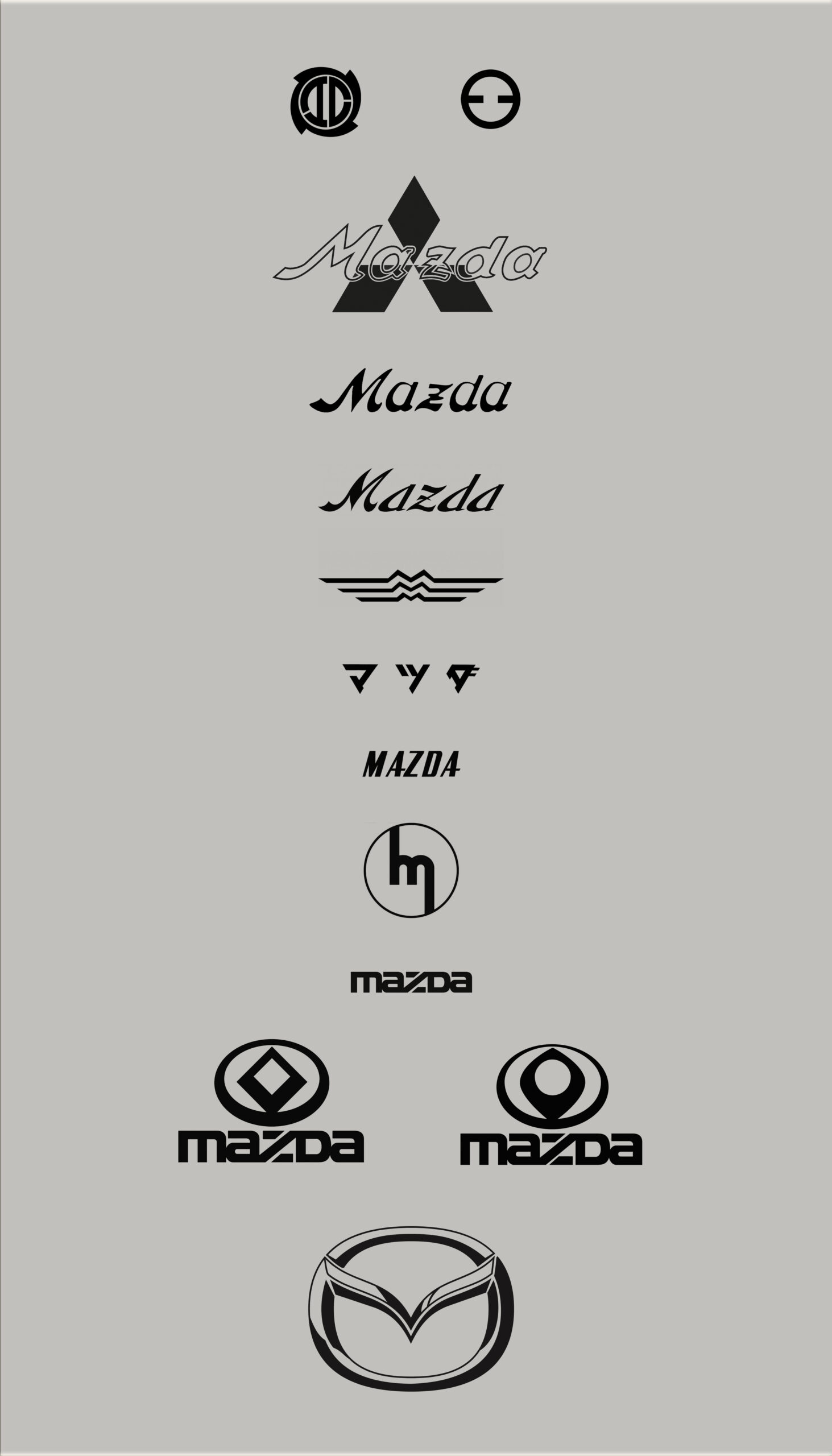Toyo Cork Kogyo Co., Ltd is founded on January 30, 1920 in Hiroshima, Japan. Shinhachi Kaizuka becomes president. In 1921, Jujiro Matsuda becomes president.
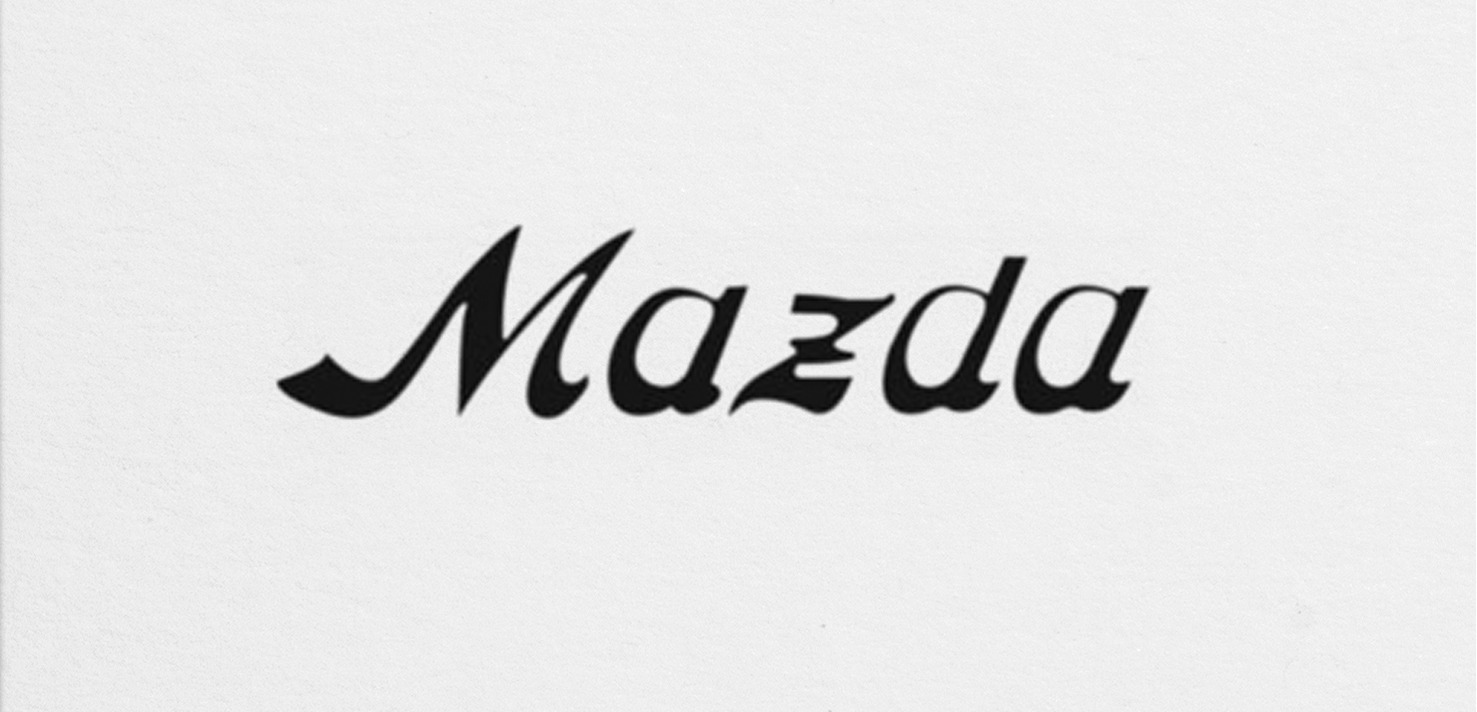
In September of 1927, the company becomes Toyo Kogyo Co., Ltd. and in April of 1929, manufacturing of Toyo machine tools begins. By November, they build a prototype 250cc two-stroke engine.
In March of 1930, six prototype motorcycles are built, and later produce and sell 30. In September of that year, a new plant is constructed in Hiroshima (Aki-gun, Fuchu-cho).
In October of 1931, three-wheel truck production starts. This first three-wheel truck Type-DA is called Mazda-go (with load capacity of 200kg). 66 units were built. Mitsubishi’s triple-diamond logo can be seen on the fuel tank because, until 1936, Mazda vehicles were marketed through the Mitsubishi Corporation’s sales network.
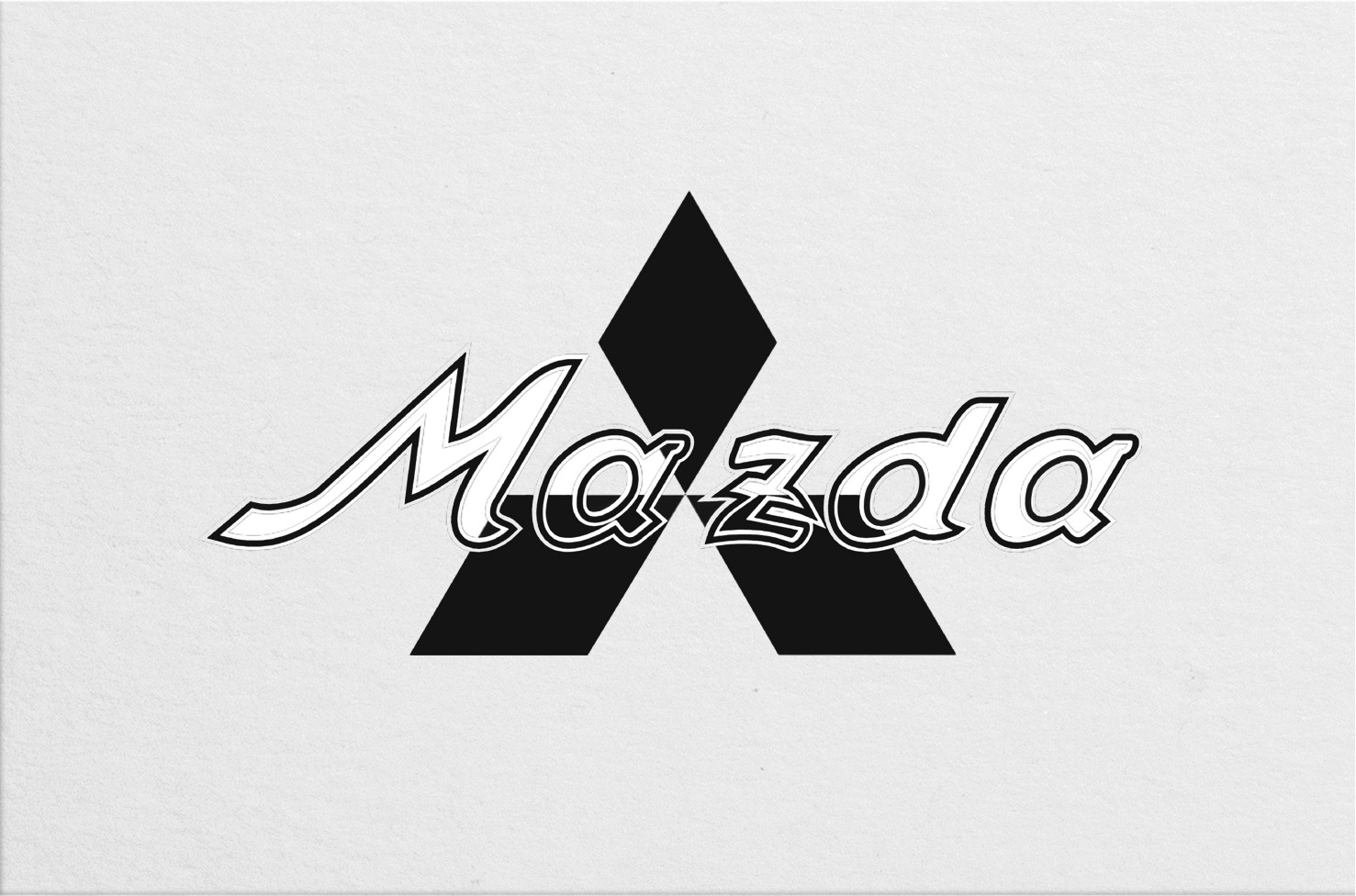
In November of 1932, Mazda starts production of three-wheel truck Type-DB. This model was equipped with a 482cc engine and a double frame, and began exports with 3-wheel trucks for China.
In January of 1934, production starts of the three-wheel truck Type-DC (with a 485cc engine). By October, the three-wheel truck Type-KA (with a 654cc engine) is introduced.
In June of 1935, Mazda introduces the three-wheel truck Type-TCS. This model featured a double frame with a low floor. in December, they introduce the three-wheel truck Type-KC36. This model with load capacity of 500kg featured a single frame made of a rolled steel plate.
As part of a marketing campaign in 1936, four Mazda-go Type-KC36 trucks and one Mazda-go Type-DC took part in a caravan from Kagoshima to Tokyo. These hardy trucks covered 2,700 kilometers in 25 days, and the event proved so successful that it sparked a boom in similar events.

n May of 1938, Mazda introduced the three-wheel truck Type-GA (Green Panel). This model was equipped with a 669cc engine and a four-speed transmission.In February of 1939, production starts of the 97-type motorcycle with sidecar.
In 1940, Mazda builds a prototype of a small passenger car. In August of 1945, the Atomic bomb is dropped on Hiroshima, and ends World War II. In December of 1945, Mazda resumed production of three-wheel truck Type-GA. Mazda lends part of its company building to the Prefecture of Hiroshima, which housed all of its government departments there until July 1946.
In April of 1949, the three-wheel truck Type-GB is introduced. This model was equipped with a 701cc engine and transmission made from a single aluminum casting.In August of 1949, exports begin of the three-wheel truck Type-GB to India.
In March of 1950, Mazda introduces the Type-LB three-wheel truck with a long body, and in April introduced the Tye-PB three-wheel passenger car with a seating capacity of 6 and a 701cc engine.In June, the Type-CA small four-wheel 1-ton truck is Introduced followed by the Type-CT three-wheel truck with 1-ton capacity. This model was equipped with a 1157cc air-cooled 2-cylinder OHV engine and a laminated safety-glass windshield.
In March of 1951, the Type-HB three-wheel truck is introduced followed by the Type-CTL three-wheel truck with 1-ton capacity in September.In December, Jujiro Matsuda becomes chairman and Tsuneji Matsuda takes over as president.
In September of 1952, the Type-CTL1 and CTL2 three-wheel trucks with 2-ton capacity are introduced and in October, Type-CTL1 three-wheel truck completes 1,000-km non-stop run from Hiroshima to Tokyo for an advertising campaign.
In December of 1953, Mazda fully redesigns Type-CTA three-wheel truck and introduces the Type-CLY 1-ton three-wheel truck with a 905cc engine displacement followed by the Type-GCZ three-wheel truck in February of 1954.
In April of 1954, Mazda participates in the inaugural Tokyo Motor Show held at Hibiya Park, and introduces Type-CHTA three-wheel truck. This 1/2-ton truck was equipped with a 1400cc 2-cylinder OHV engine.In September, they fully redesign all three-wheel truck models.In August of 1956, Mazda introduces Type-GLTB, CMTB and CHTB three-wheel trucks.
In August of 1957, the Type-HBR three-wheel truck is Introduced. This 2-ton truck was equipped with a 1400cc engine and a steering wheel, followed by the Type-MAR three-wheel truck in November. This 1-ton model was equipped with a 1005cc engine and a steering wheel.
April of 1958 came the Romper, 4-wheel light truck. This 1-ton truck was equipped with a 1105cc 2-cylinder OHV engine.
In March of 1959, Mazda introduced the D1100 (1-ton) and D1500 (1.75-tons) four-wheel trucks. These models were equipped with a water-cooled engine.They also introduced the K360 three-wheel micro-mini truck in May with a 356cc engine and the T600 small three-wheel truck in June with a 577cc engine.
In July of 1959, Mazda adopts a new company logo design based on “m”.
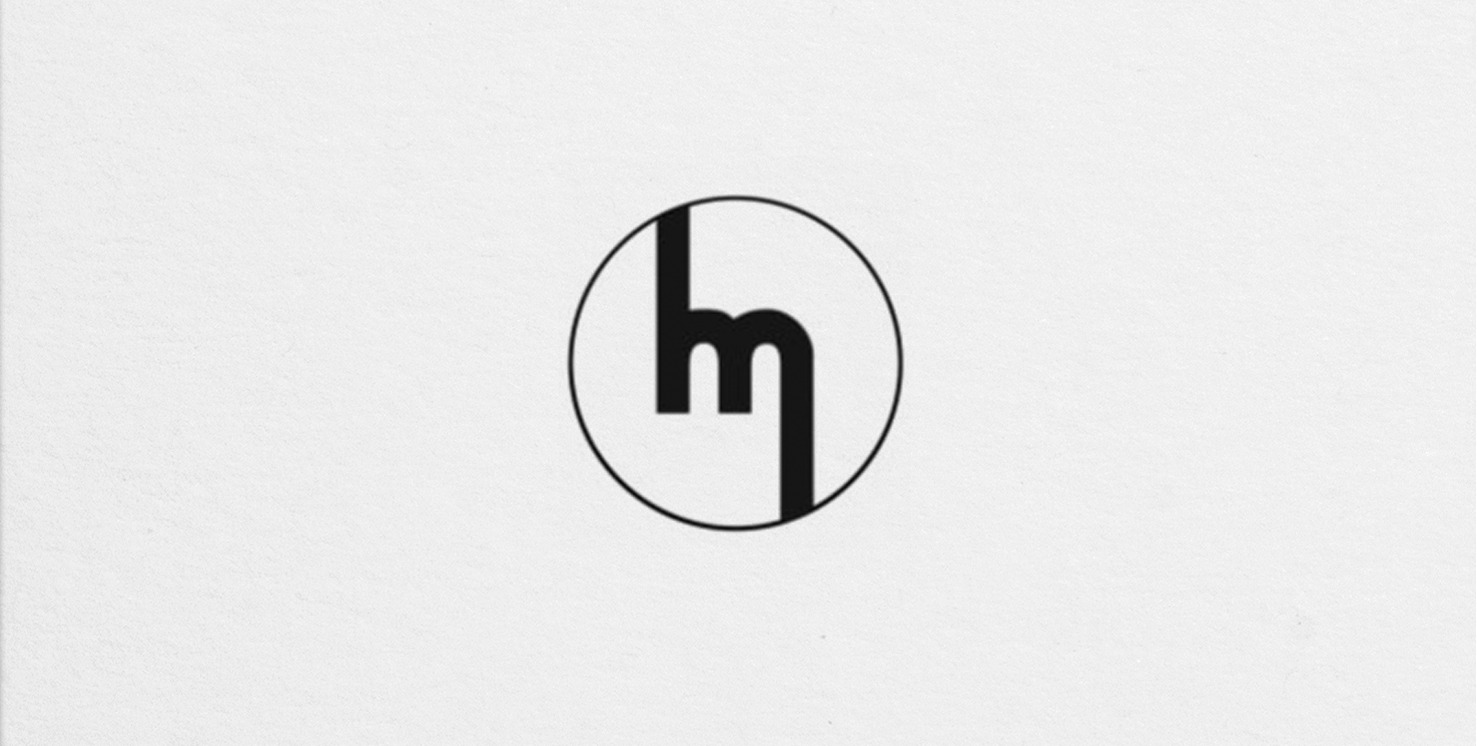
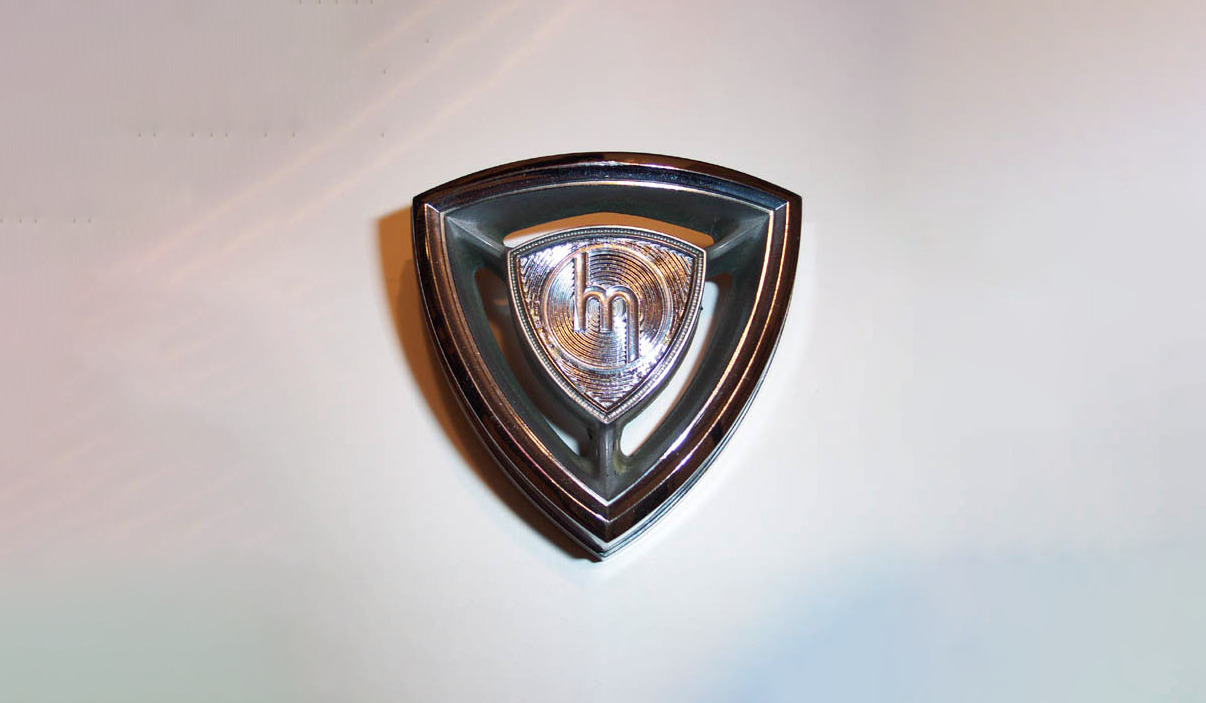
In October of 1959, Mazda introduces the T1100/T1500, three-wheel truck. In May of 1960, the R360 Coupe is introduced, making it the first Mazda 2-door passenger car.
The R360 Coupe had four seats and was powered by a 356cc air-cooled 16-horsepower engine. Thanks to comprehensive weight savings, it achieved fuel economy of 32km/liter. The model range included a version with an automatic transmission. At just 300,000 yen, the R360 Coupe brought the dream of owning a car within the reach of salaried workers, and in December 1960 alone, 4,090 units were bought by eager customers.
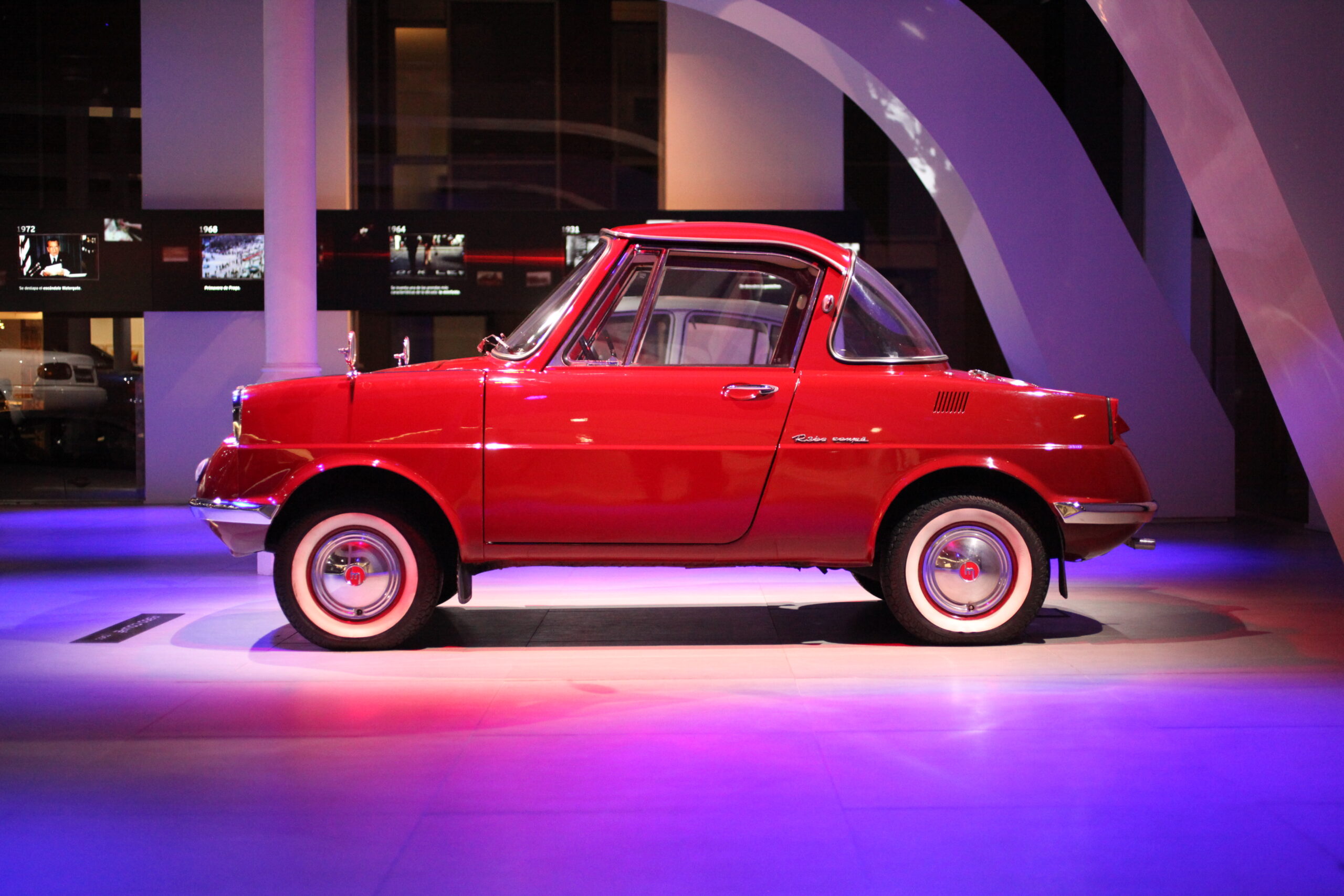
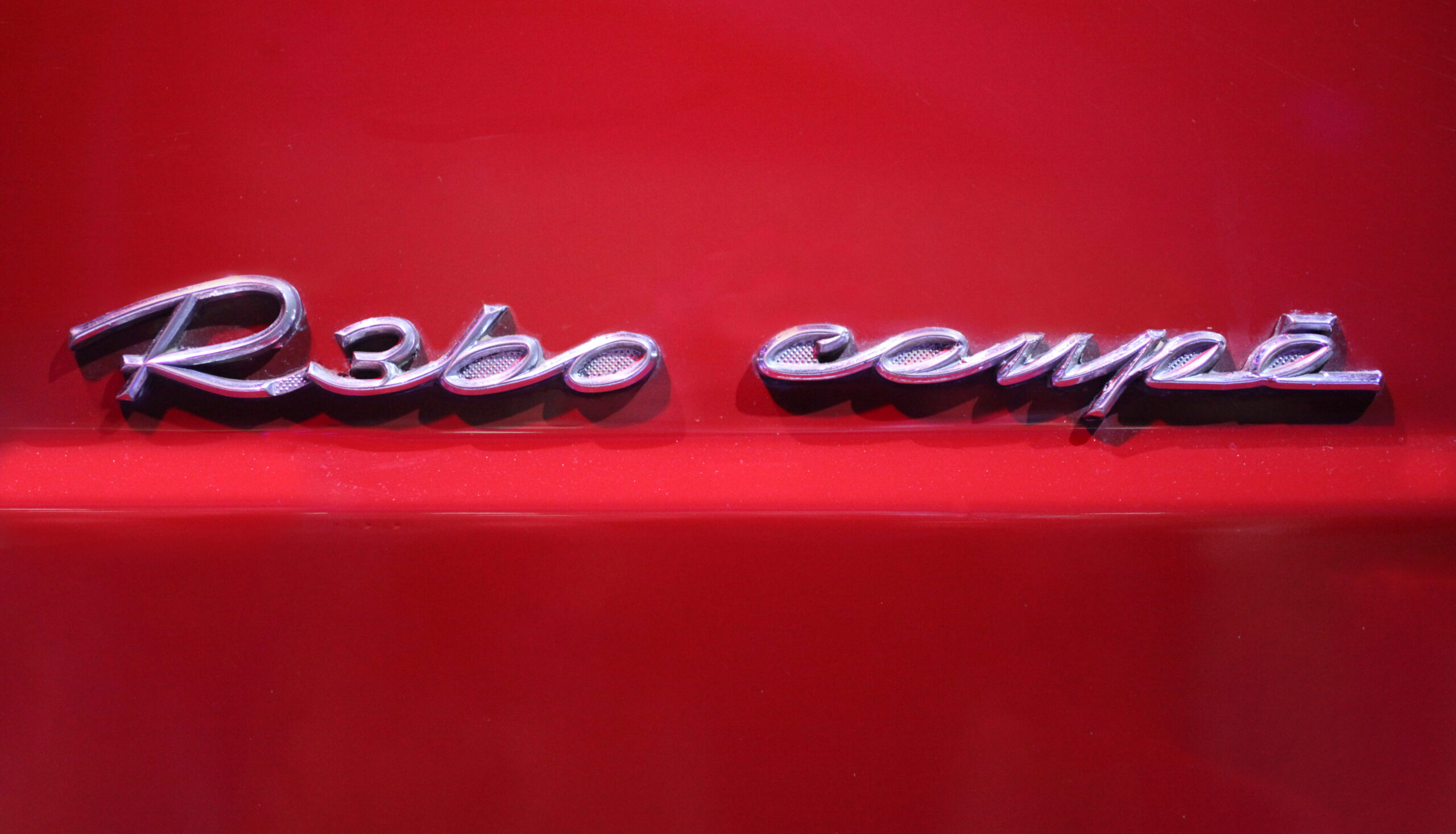
In February of 1961, Mazda Introduces the B360 light truck, then the B360 light van in May. In July of 1961, Mazda entered into technical cooperation with NSU/Wankel (formerly in West Germany) on rotary engine.In Agustt, it introduced the B1500 compact pickup.
In January of 1962, Mazda began local assembly in South Korea.In February, it introduced the Carol 360 micro-mini passenger car. This models was equipped with a water-cooled 358cc 4-cylinder 4-cycle engine and seated four. A 4-door version was launched in September. In April it introduced the D1500/D2000 truck, then the B1500 van in September.It ended the year by Introducing the Carol 600, Mazda’s first 4-door passenger car.
By March of 1963, Mazda had reached production of 1 million vehicles and in June of that year began local assembly in South Africa.In October of 1963, they introduced the 1st generation of the Familia van (Mazda 800/1000 Estate).
1964 began with the introduction of the E2000 pickup followed by the Mazda 800 wagon in April, then the Mazda 800/1000 in October. This model was wquipped with a 800cc water-cooled 4-cylinder aluminum alloy engine that boasted 42PS. A 2-door version was launched in November.
In May of 1965 the Miyoshi Proving Ground was completed, and 25-seat light bus with a 1490cc OHC engine, as well as a 3.5-ton E2300 truck are introduced. In June, they continue with the release of the Kraft Track. This 1/1.5-ton truck was equipped with a 1484cc in-line 4-cylinder gasoline engine and seated four. Then in October, Mazda Introduces the Proceed B1500, This 1-ton truck was equipped with a 1484cc in-line 4-cylinder gasoline engine and seated three. It was followed by the Familia Coupe powered by a 985cc OHC engine in November.
In May of 1965 Mazda introduced th Bongo (F800/1000 Coach). The lineup consisted of an 8-seater coach, route van, van and truck. Then the Mazda Luce coupe (Mazda 1500/1800) in August. The new passenger car plant (Ujina) in Hiroshima is completed in November.
In January of 1967, the E2500 Truck with 2-ton capacity is introduced (with a diesel engine) which was jointly developed with Perkins Engines Co., Ltd.
In March, full-scale exports to the European market starts and in April, Mazda establishes a sales company in Australia. May of 1967 bought the introduction of the Mazda Cosmo Sports (110S), Mazda’s first rotary engine vehicle. This two-seat sports car cost 1,480,000 yen, was powered by a 491cc x 2 two-rotor rotary engine that generated 110 horsepower. It achieved a maximum speed of 185km/h and a quarter mile (400m) time of 16.3 seconds. In the following year, power was upgraded to 128 horsepower, maximum speed to 200km/h, and its quarter mile time to 15.8 seconds. The price of the new version was 1,580,000 yen.
In November of 1967, Mazda introduced the 2nd generation of the Mazda Familia (Mazda 1000/1200/1300). This model featured a 987cc in-line 4-cylinder aluminum alloy engine. It was available as a two-door or a four-door, both of which seated five.
In July of 1968, Mazda established a sales company in Canada and also introduced the Familia rotary coupe (R-100 Coupe), This model was powered by the 10A two-rotor (491cc x 2) rotary engine, boasting maximum torque of 100PS at 7000 rpm (gross).In September, they began assembly of passenger cars in Malaysia, and ended the year by introducing the Porter Truck (B360/550/600) and the Porter Van (B360/550/600) in November.
In April of 1969, Mazda began full-scale exports of rotary engine vehicles and also introduced the first generation micro-mini Porter Cab. the Familia Rotary Coupe Wins at the Singapore Grand Prix.In October, Ford, Nissan and Mazda agree to establish Japan Automatic Transmission Company (JATCO). They also introduce the Luce rotary coupe (Mazda R130 Coupe), which featured a two-rotor (655 cc x 2) 13A rotary engine, this was the first front-engine, front-wheel drive passenger car in Japan. That same month, they introduced the Boxer (E3800/4100) a mid-sized, 3.5/4-ton truck with a 3783cc 6-cylinder diesel engine.
January of 1970 brought the establishment of a U.S. sales office, Mazda Motors of America, in the state of Washington with US exports beginning in April, and by June were exporting rotary engine vehicles.
In May of 1970, Mazda introduces the 1st generation of the Capella (RX-2/R612 (RE) and the Mazda 616/618 (CE). Mazda developed the Capella as a sporty saloon to fill the gap in its lineup between the Familia and the Luce. There were two body types, a two-door coupe and a four-door sedan, and two engines, a two-rotor 12A rotary engine (120 horsepower) and a 1,600cc reciprocating engine (100 horsepower). The Capella quickly became popular and earned the nickname, “Kaze no Capella” or “Capella, the Wind,” thanks to its 190km/h top speed. In October 1970, the lineup was expanded with a smaller displacement 1,500cc reciprocating engine (92 horsepower), and in January 1971, the Capella became the first rotary-engined vehicle to be offered with an automatic transmission (REmatic). The range was further expanded with a dedicated sport model, the Coupe GS, in February. The ride height of the Coupe GS was 40mm lower than the standard versions, which helped the Capella Coupe GS to take the fight to the mighty Skyline GT-R on the racetracks of Japan.In November, Kouhei Matsuda becomes president.
In February of 1971, Mazda establishes Mazda Motor of America (MMA) and begins local production in Indonesia.In August, they introduce the 1st generation of the Titan (E2000/2500/2700/3000), and in September add the Savanna (RX-3) and the Mazda 808/818 Mizer. They end the year by supplying the Courier (Proceed) to Ford in December.
In April of 1972, they introduce the 1st generation of the Parkway and the Chantez in July. In October Mazda completes the Training Center in Taibi. In November, they introduce the Mazda Luce 929 (CE), RX-4 (RE). RX-4 was first car meeting the stringent Japanese exhaust emission standards for 1975.
In March of 1973, Mazda opens a sales company in West Germany. In September, they introduce the 3rd generation of the Mazda1000/1200/1300.
January of 1974 began with local production in the Philippines.In February, the introduced the 2nd generation Capella, and in May, complete the Miyoshi Diesel Engine Plant.
In January of 1975, Mazda begins local production in Thailand. In April, the brand introduces the Mazda Roadpacer, a rotary-powered passenger car featuring a13B Rotary engine (654cc×2) and a REAPS-3 exhaust gas treatment system, the Roadpacer was the first standard-sized passenger vehicle to meet 1975 emission regulations in Japan. Two seating arrangements were available: a 6-seat type with a front bench seat and 5-seat type with bucket seats. From Octber of the same year, it featured a REAPS-5 treatment system to comply with 1976 regulations. In October, they also introduce the Mazda Cosmo (Mazda RX-5/Cosmo (RE), Mazda 121/121L (CE).
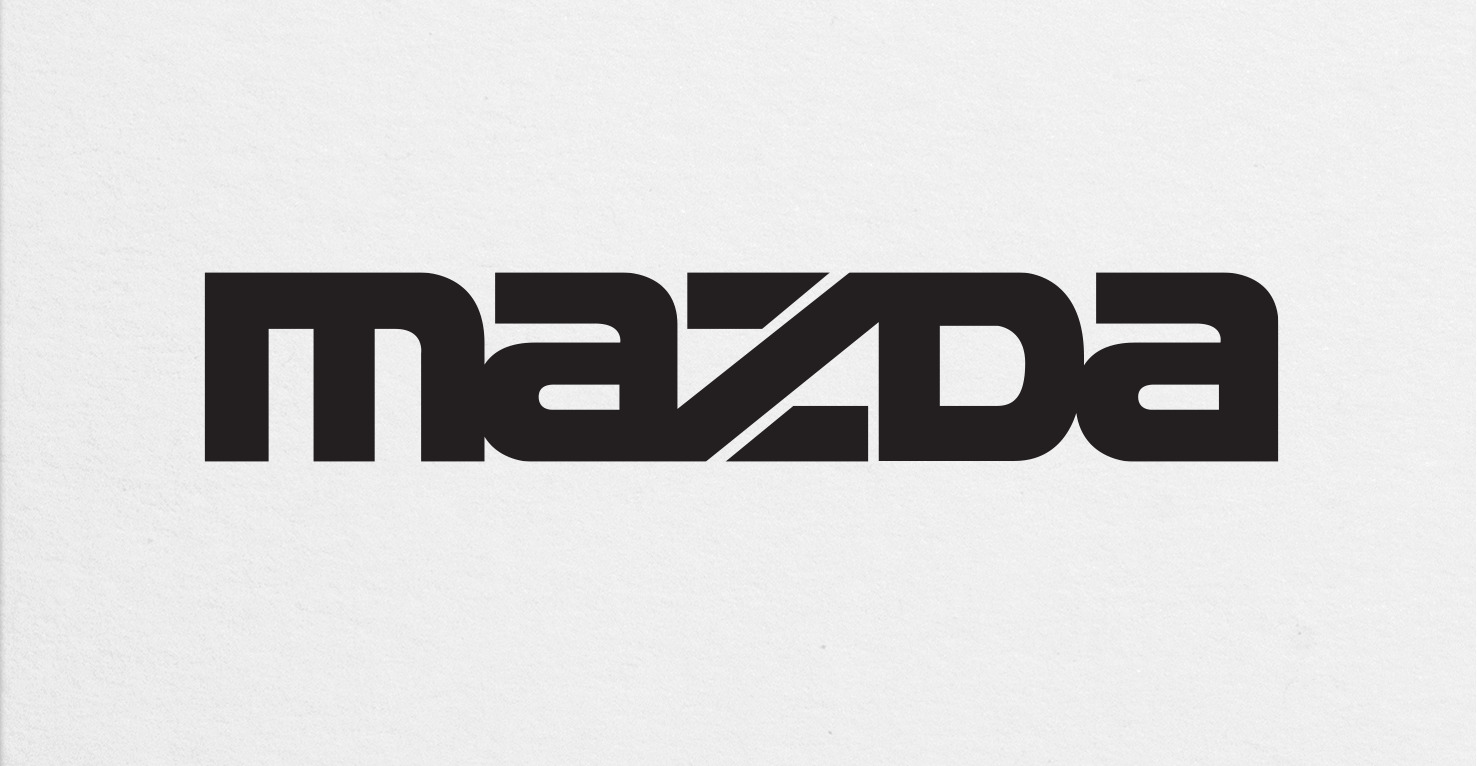
January of 1977 saw the introduction of the 4th generation Familia (original GLC/323). In May, they introduce the second generation of the Titan (E2000/2500/2700/3000), and in October, the third generation of the Luce Legato (Mazda 929L). As the year ends, Kouhei Matsuda becomes chairman and Yoshiki Yamasaki takes over as president in December.
In March of 1978, Mazda introduces the first generation of the Savanna RX-7 (RX-7). The Savanna RX-7 was developed under the simple theme of “pursuit of driving pleasure.” Its 12A two-rotor rotary engine (130 hp) was mounted in a front-midship layout that enabled the RX-7 to exhibit outstanding handling stability.
The Savanna RX-7 was the only Japanese car at the time to feature popup headlights, which reduced air resistance. It came in a range of five exterior body colors and featured a T-shaped instrument panel, a large, highly-visible three-ring meter cluster and bucket seats. Measuring 4,285mm (overall length) x 1,675mm (overall width) x 1,260mm (overall height), it had room for four occupants and managed a turning circle of 4.8 meters. The five-speed manual transmission model recorded a quarter mile (400m) time of 15.8 seconds and a top speed of 180km/h. The price range included 1,230,000 yen for the Custom model, 1,370,000 yen for the Super Custom, 1,440,000 yen for the GT, and 1,690,000 yen for the Limited grade (an automatic transmission cost an extra 40,000 yen).
October saw the release of the third generation Capella (Mazda 626), and by November Mazda had reached a cumulative production of 1 million rotary engine models.
In January of 1979, Mazda adopts a new symbol. By February, Mazda reach 1 million vehicles in North America.In November of that year, Ford Motor Company and Mazda enter into a capital tie-up.
In January of 1980, Masaji Iwasawa becomes president.
In June, Mazda introduces 5th-generation Familia (323). This model came in two body types: a three-door and five-door hatchback. FF (front-wheel drive) was adopted for this Familia for the first time. The model featured a 1.3-liter E3 or 1.5-liter E5 lean burn engines with EGR and three-way catalysts. Four wheel independent suspension was adopted with strut suspension in the front and SS suspension in the rear.
Some models featured full-flat reclining seats, rear lounge seats and rear reclining seats. Four-door sedan Familia Saloon (323 GLC) was added in September 1980.That August, Mazda opens Harajuku Mazda Rotary showroom in Omotesando, Tokyo.In October, the 3rd-generation Titan (T2000/2500/3000/4100 Truck) is introduced. The Titan was available with a 2.5-, 3.0- or 4.1-liter diesel engine. Maximum output of the 3.0-liter diesel engine was improved (90PS/3800rpm). Two-way shift (sub-transmission) was installed. Weight was reduced by using high-tensile steel for the traditional box section frame and (truck) box. A comfortable cabin was achieved with reclining seats and multi-use seats.
In December of 1980, the Familia (GLC/323) receives “1980-1981 Car of the Year Japan”.
In April of 1981, Mazda (North America), Inc. is established and reach cumulative exports of 5 million vehicles. In July, the RX-7 becomes the first Japanese car to win an overall victory at the Total 24 Hours of Spa endurance race in car number 40 with drivers T. Walkinshau and P. Dieudonne.
In September, Mazda introduces the 2nd-generation Cosmo (929) two-door hardtop (2.0-liter EGI/2.0-liter gasoline engines). In pursuit of higher aerodynamic performance, wedge-shaped and slanted-nose design were adopted as the basic proportions of this model. Retractable headlights were adopted. The model was developed as high-end specialty car.
A four-door hardtop was introduced in October with a 2.0-liter EGI and a 2.0-liter reciprocating engines. A four-door saloon was introduced in October with a 2.2-liter diesel, 2.0-liter and a 1.8-liter gasoline engines. A model featuring the 12A rotary engine with six-port induction was introduced at the end of November.
In October, the 4th-generation Luce (929) is Introduced. This model came in two body types: four-door hardtop with wrap-around rear window and four-door saloon. Five engines were available: a 12A rotary engine with six-port induction, a 2.0-liter MA EGI gasoline engine, a 2.0-liter MA gasoline engine, a 1.8-liter VC gasoline engine and a 2.2-liter diesel engine. The rotary engine variant was introduced in November.
In December, operations start at the Hofu Transmission Plant (Nakanoseki area), and establishes Autorama (which begins to supply products from October ’82).
In January of 1982, Mazda introduces the 2nd-generation Parkway (T2000/3000 bus). This model featured a 2,977cc HA diesel engine with a sub-transmission enabling ten-speed gearing. It seated 26 people. High roof and air-conditioned models were added. High-back seating was offered for all variants.
In August, Mazda completes a plant for the production of new engines in Ujina west. In September, production begins at Hofu plant (Nishinoura area). Also in September, Mazda debuts the world’s first rotary turbo engine in the Cosmo (929) and Luce (929). A 12A rotary turbo engine with maximum output of 160PS and maximum torque of 23.0kg・m. A Luce rotary turbo was introduced in October.Mazda also added a 2.0-liter EGI engine to the engine lineup for Cosmo and Luce Saloons.
Mazda also introduced the 4th-generation Capella (626) sedan and coupe. The models were available with Mazda stable combustion 1.6-liter (90PS), 1.8-liter (100PS) and 2.0-liter MEGI (120PS) engines.In October, Mazda adds a two-seater business van model to Familia van (323/GLC Station Wagon) lineup.
In December, Mazda Shatai Kanto auto body company, within the Chiba distribution center is Established, and “Japanese Car of the Year” is awarded to Capella (626).
In April of 1983, Mazda begins local production in Colombia, and Introduces drilling robots, THMJ-2350AD and THCJ-2350AD.
In June, Mazda establishes Mazdaspeed to offer services in the field of motor-sports.
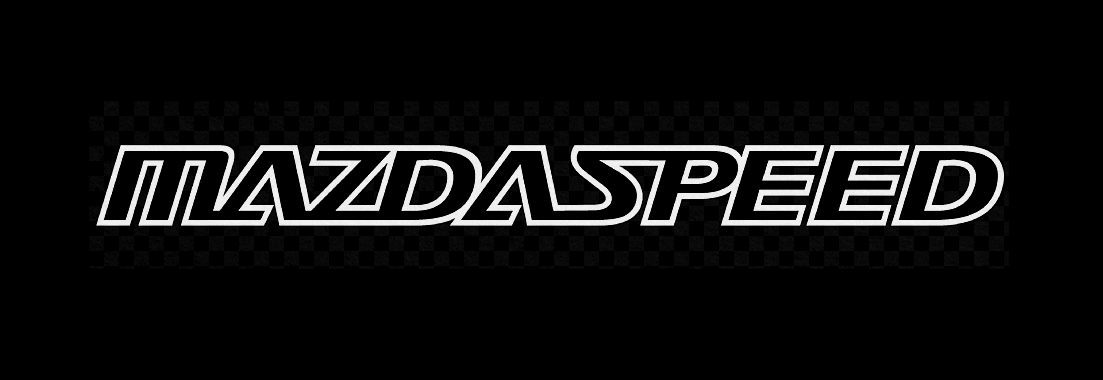
In June, Mazda also introduces new Bongo Brawny wagon series (E-series) in Japan. The model was available with a 1.8- or 2.0-liter gasoline engine or a 2.0- or 2.2-liter diesel engine. It seated nine or ten people. Ventilated disc brakes were equipped for the front wheels. Some variants offered three rows of full-flat reclining seats. It also introduces the Bongo Brawny van (E-Series) and adds a turbo engine model to Familia (323/GLC) lineup. In July, Mazda reaches cumulative production of vehicles of 15 million units. In September, Mazda makes an investment in Korean automaker Kia. Other achievements include the addition of a Magnum diesel engine model to the Capella (626) sedan lineup, a new rotary turbo engine model to Savanna RX-7 (RX-7) lineup and the introduction of the 3rd-generation Bongo wagon (E-Series).
The model was available with a 1.8-liter gasoline or 2.0-liter diesel engine and seated nine people. A high-roof model was also offered. Some variants offered three rows of full-flat reclining seats and some featured swivel seats that could be turned around to face the rear. It was followed by the 3rd-generation Bongo van (E-Series). The model was available with a 1.4-liter gasoline or 2.0-liter diesel engine and seated either three or six people. Some variants offered two rows of full-flat reclining seats.
In October of 1983, A wind tunnel testing laboratory for automobiles is completed within the Miyoshi Proving Ground. Mazda also adds a turbo engine model to Capella (626) sedan and coupe lineup with a 2.0-liter Magnum turbo engine with a maximum output of 145PS.
January of 1984 brings the 3rd-generation Bongo E-Series Truck. In May, the company is renamed as Mazda Motor Corporation, and in October establishes the Mazda Foundation. In November, Moriyuki Watanabe becomes chairman and Kenichi Yamamoto becomes president.
Mazda Motor manufacturing (USA) Corporation (MMUC) is Established in 1985. It also Introduces the 6th-generation Familia (323). the Slanted-nose, wedge-shaped 3/5-door hatchbacks and 4-door sedan came with further sophistication through functional interior.
Increased overall height, width and wheel base realized roomy cabin space. Engine lineup included 1300, 1500, 1500EGI and 1500EGI turbo engine with improved parts including cylinder block, cylinder head, camshaft, valve and intake/exhaust system parts. SS suspension was installed. Damping force variable damper was adopted for some models for the first time in this class.
May brings a newly established comprehensive performance test course in the Miyoshi Proving Ground. In October, Mazda introduces the 2nd-generation Savanna RX-7 (RX-7).
The second-generation, or FC model, Savanna RX-7 was developed as a pure sports car with the perfect balance between driving dynamics and comfort. Its dimensions were 4,310mm (overall length) x 1,690mm (overall width) x 1,270mm (overall height). The FC was powered by the 13B rotary engine (185 horsepower) in a front midship layout, and retained a loyal fan base even after the third-generation model was introduced. By December, production of Savanna RX-7 (RX-7) reaches 500,000 units.
In February of 1986, the Ford Festiva (Mazda 121) was introduced. In May, the company moves the Osaka office to Minami-ku, Osaka, and establishes the “Mazda Rotary Midosuji” showroom. Cumulative production of Mazda rotary-engine vehicles reaches 1.5 million units.
In August of 1986, Mazda displays cars at the Beijing International Automotive Exhibition. In September, they introduce the 5th-generation Luce (929). Twin scroll turbo spec was offered with Mazda’s first 2000 V6 engine. In addition, a model with a turbocharged 13B rotary engine was available. Auto-adjusting suspension was adopted while type-E multi-link suspension was installed for rear.In October, Mazda adds a 2000 LPG engine model of Luce (929).
In December, the Mazda R&D Center in Ann Arbor is completed.
In January of 1987, Mazda introduces the Etude. This model was a 3-door hatchback with a large glassed area. It came with a 1600 DOHC engine employing a variable air intake system called “VICS”. Twin-tube low-pressure gas charged shock absorber and disc brakes on all four wheels helped balance fun driving and a smooth ride.
In February, the Familia (323) with full-time 4WD becomes the first Japanese car to win the overall title at Swedish WRC (World Rally Championship).
In May, the 5th-generation Capella (626) is introduced. This model came in 3 body types: 4-door sedan, 2-door coupe “C2” (MX-6)and 5-door “CG”. Adopted the world’s first speed sensitive four-wheel steering system. Models with a RF2000 diesel engine featuring a pressure wave super charger and a full-time 4WD system were introduced in July.
In June, Mazda establishes a service center in Beijing and opens a new research center in Yokohama, Japan.
In August of 1987, Mazda introduces the Savanna RX-7 Cabriolet (RX-7 Convertible). This two-seater model featured a ‘three way top’ system with power roof opening/closing. It also adds a 3000cc V6 to the engine lineup for Luce (929).In September of that year, Mazda begins vehicle production at Mazda Motor Manufacturing USA Corporation (MMUC).
Mazda ends the year by reaching an OEM agreement for micro-mini vehicles with Suzuki Motors Co., Ltd. in December and Kenichi Yamamoto becomes chairman and Norimasa Furuta named president respectively.
In May of 1988, Mazda Established Research and Development of North America, Inc. (MRA) and reaches a production agreement for micro-mini vehicles with Suzuki. In June, they starts importing the Ford Probe from the US. In September, they introduce the MPV in US and provides American network NBC with an EV to cover the marathon at the Seoul Olympic Games.
In October, Mazda establishes a sales company in Europe (MME), and introduces the Persona, a 4-door hard top without a center pillar. 2000 DOHC and 1800 SOHC (later changed to DOHC) engines were mounted.
Unconstrained exterior appearance is coupled with simple, but well-tailored leather or fabric interior.Making a comfortable space was pursued, paying attention to achieving silky-smooth driving and operation feel.
In February of 1989, Mazda displays the MX-5 Miata (Eunos Roadster in Japan) at the Chicago Auto Show and introduces the 7th-generation sedan and 3-door hatch back Familia (323).
In April of 1989, Mazda establishes Eunos and Mazda Autozam dealership channels.
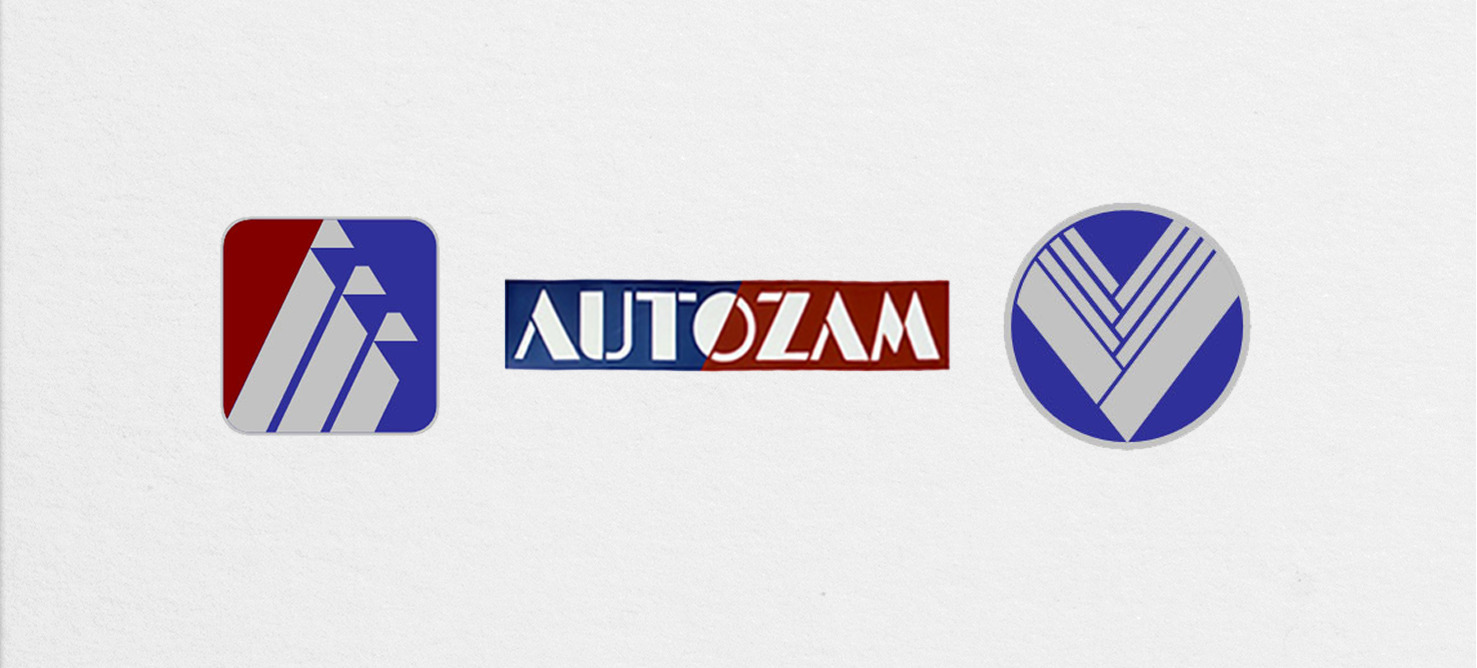
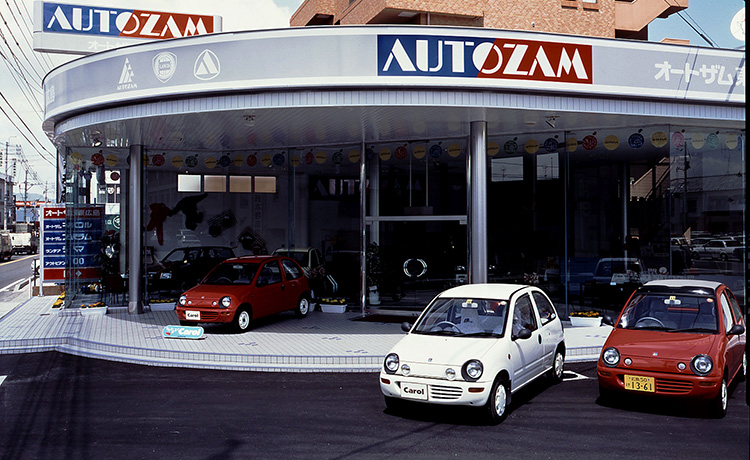
In April of 1989, Mazda receives the Director-General’s award from the Science and Technology Agency (Person of scientific and technological merits) for the development of a new air intake system for the rotary engine. They also Introduces the 7th-generation Familia Astina (323/323F). The model featured 1600DOHC, 1500 DOHC and 1500 OHC engines and its wedge-shaped body achieved excellent enginerodynamic characteristics. A retractable headlight was adopted on the low hood.
In May, the company holds the first international Mazda Quality Control Circle in Hiroshima. It also receives an Asahara Young Researcher’s award from Society of Automotive Engineers of Japan, Inc. for “Study of exhaust hydrocarbon emission reduction on single-spray direct-injection diesel engine”. They also introduce the 4th-generation Titan (T2600/3000/3500/4000).
In June, the Tokyo Branch is renamed Tokyo Head Office and the new dealer network Autozam starts operations which starts selling Ford Festiva 5 (produced by Kia) and 1st-generation Scrum vans and trucks (Suzuki OEM vehicles) at Autorama dealers.
In July, Mazda begins importing the Citroen BX to Japan. In August, Mazda breaks ground for an engine manufacturing plant of a newly established company in Indonesia, P.T. Mazda Indonesia Manufacturing (MIM).That same month they add a full-time 4WD model to 7th-generation Familia (323) (3HB, sedan) lineup.
Sports full-time 4WD: To pursue driving pleasure, full-time 4WD with a center differential using a viscous limited slip differential was added. Japan’s first unequal torque distribution of 43 : 57 was implemented. 1800 DOHC turbo engine with intercooler output a maximum of 180 horse power.
Practical full-time 4WD: Planetary geared center differential with front and rear wheel torque distribution of 50 : 50 was adopted. 1600 SOHC engine was installed.
In September, Mazda installs a high-response driving simulator at research center in Yokohama, significantly extends warranty period for new vehicles and the Eunos dealer network starts business.
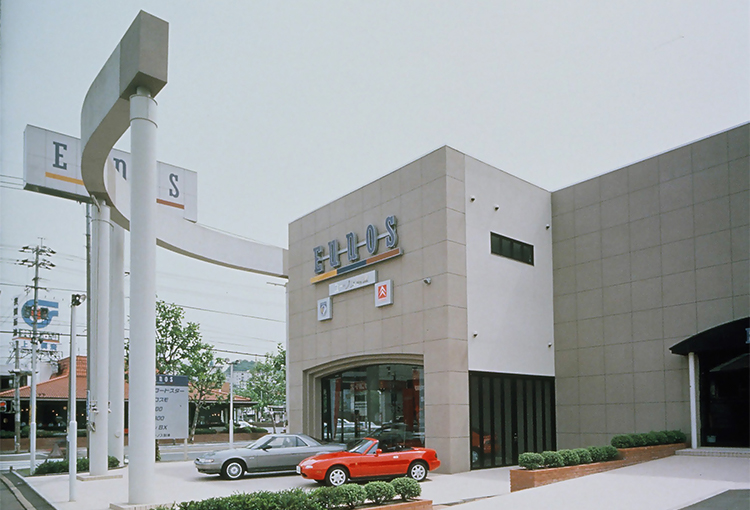
September of 1989 also saw the introduction of the first-generation Eunos Roadster (MX-5/MX-5 Miata).
This was a legitimate sportscar in which driving pleasure was throughly pursued. Following its debut at the Chicago Auto Show, the car received a great response from across the world. In Japan, car-ordering events were held in various locations. With the affordable price of 1.7 million yen, this car became a big hit.
It also started selling the Citroen BX19 at Eunos dealers. In November, the Hokkaido Kenbuchi Proving Ground is completed.
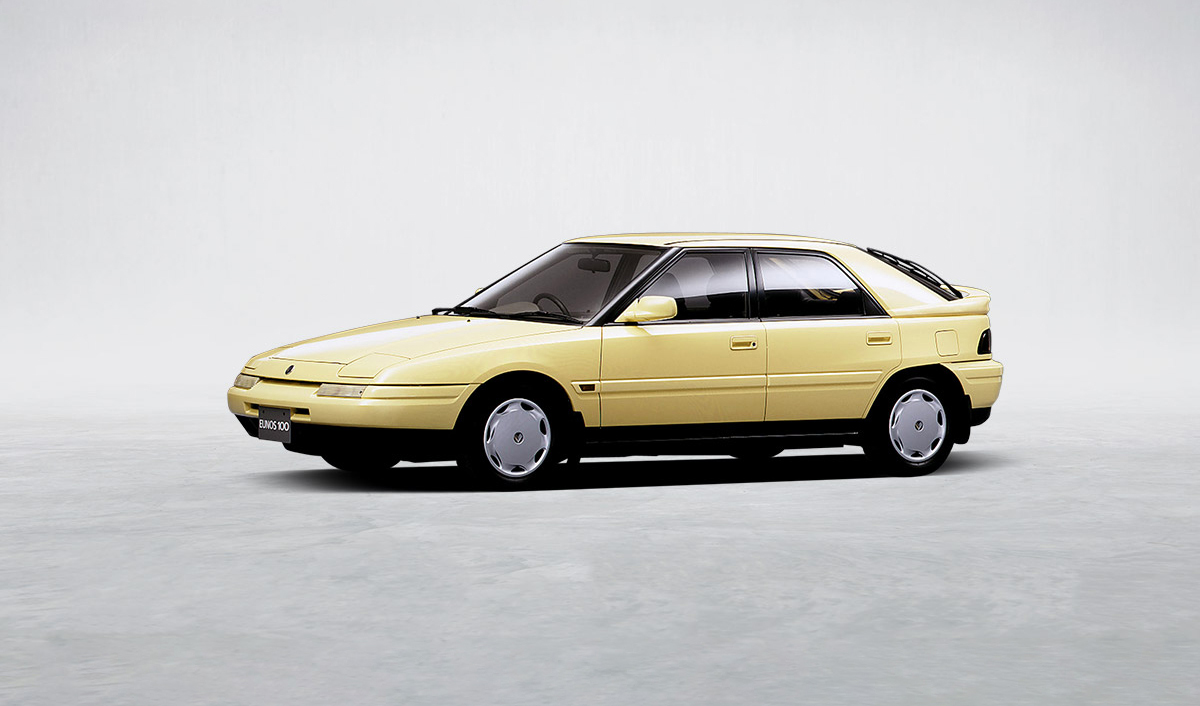
In January of 1990, Mazda holds a ceremony to mark the completion of the Kenbuchi Proving Ground, announces the fall launch of Mazda Navajo, an OEM model produced by Ford, in the US and introduces the Proceed and MPV in Japan.
This FR model featured a 3.0-liter V6 engine. The rear doors were hinged and opened widely. Three rows of seating, upholstered in two-tone genuine leather, accommodated seven people.
In February, it starts selling the Eunos Cargo, a one-box wagon, at Eunos dealers. The 2WD model featured an FE-type 2.0-liter in-line 4-cylinder OHC gasoline and a 2.0-liter diesel engine. The 4WD model featured an RF-type 2.0-liter diesel turbo engine. Two-tone body colors were available for all model grades.
It also starts selling the Lancia Thema at Autozam dealers. The model came with a 2.9-liter V8 DOHC engine; a 2.8-liter V6 engine and a 2.0-liter in-line 4-cylinder DOHC engine, as well as the Lancia Autobianki Y10. This 3-door hatchback came in a single model grade, 1.3GTi.e., with a 1.3-liter engine.
In March, Autozam dealers added the Carol (micro-mini) featuring a new 657cc engine and Scrum vans and trucks (commercial vehicle) featuring a new 657cc engine.
In April, Eunos dealers start selling the high-end personal Eunos Cosmo coupe. This dynamic 2-door coupe model featured a 3- or 2-rotor rotary engine. The world’s first mass-production model with a 3-rotor rotary engine coupled with a sequential twin turbo charger delivered outstanding dynamic performance. The Eunos Cosmo adopted double-wishbone front suspension and multi-link rear suspension with twin dampers. It was also the world’s first car to feature a satellite navigation system.
They also begin the sale of the Citroen AX. Two model grades were available: a 3-door hatchback AX GT and a 5-door hatchback AX 14TRS. Both featured a 1.4-liter in-line 4-cylinder injection engine.
That May, Mazda announces the start of exports of the Familia (Mazda 323) to Soviet Unionand in June begins production and sales of Mazda 323 in Taiwan.
In September of 1990, Mazda develops a solar-powered car. That month it also introduced the Autozam Revue (121). The model featured a 1.5- and 1.3-liter in-line 4 cylinder SOHC engine. A model grade with a 3-way electric sliding canvas top was added to the lineup.
In December, Mazda starts operation of their Safety Testing Laboratory No. 2 equipped with a decelerating collision simulator, etc.
Mazda began 1991 by introducing childcare leave and launching the Proceed Marvie. In February, they add a “Senior Family” system, enabling employees to work beyond the mandatory retirement age of 60.
That March, they introduce the all-new sporty coupe MX-3 at the Geneva International Motor Show, followed by the the first-generation Sentia (known as 929) in May.
During August of 1991, the brand starts consignment production of MR90 at a Suzuki plant in Indonesia. They also introduce the Eunos Presso (known as MX-3/Eunos 30X), a two-door, four-seater coupe with a rear hatch, it featured a 1.8-liter V6 DOHC engine, the smallest-displacement mass-produced V6 engine in the world at the time. Maximum horse power was 140 ps (net)/7000 rpm. The model came with a 5-speed manual or 4-speed automatic transmission.
They also introduce the Autozam AZ-3 (known as MX-3/Eunos 30X), which was a four-seater sporty coupe with front and rear spoilers and rear side deflectors. The model featured a 1.5-liter in-line 4-cylinder DOHC engine with a variable air intake system. Maximum output was 120ps (net, 5-speed manual transmission).
Also in August, a Mazda 787B No.55 wins the Le Mans 24-Hour Endurance Race claiming the first victory for a Japanese automobile and the rotary engine. Mazda’s first attempt at the Le Mans 24-hour race came in 1974. The Mazda Auto Tokyo (now Mazdaspeed) team entered a Sigma MC74 chassis powered by the 12A rotary engine. Mazda tried again in 1979 and then every year from 1981until 1991, when, on its 13th attempt, a rotary engined car finally took the checkered flag.
In September, they introduce the Cronoss (known as Mazda 626), it was developed as an intelligent 4-door sedan of the new era, it was equipped with a 2.0- or 1.8-liter V-6 engine (exclusively for front-wheel-drive). A full-time 4WD model was launched in November and was available with a 2.0-liter in-line 4-cylinder engine with a long stroke.
It also introduced the second-generation Scrum van and truck, an EPI specification engine was adopted. The F6A 3-cylinder turbocharged engine with an intercooler improved the maximum power to 61ps/5500rpm. The van’s engine was mounted in rear mid-ship layout, enhancing quietness and handling stability. The truck’s wheelbase was extended by 15mm and the cabin length by 60mm.
It ends the month by exhibiting the Eunos 500 and MX-6, which were scheduled for sale, and a hydrogen rotary engine vehicle called HRX at the Tokyo Motor Show.
In November of 1991, Mazda establishes the Anfini sales channel (formerly Mazda Auto) in Japan.
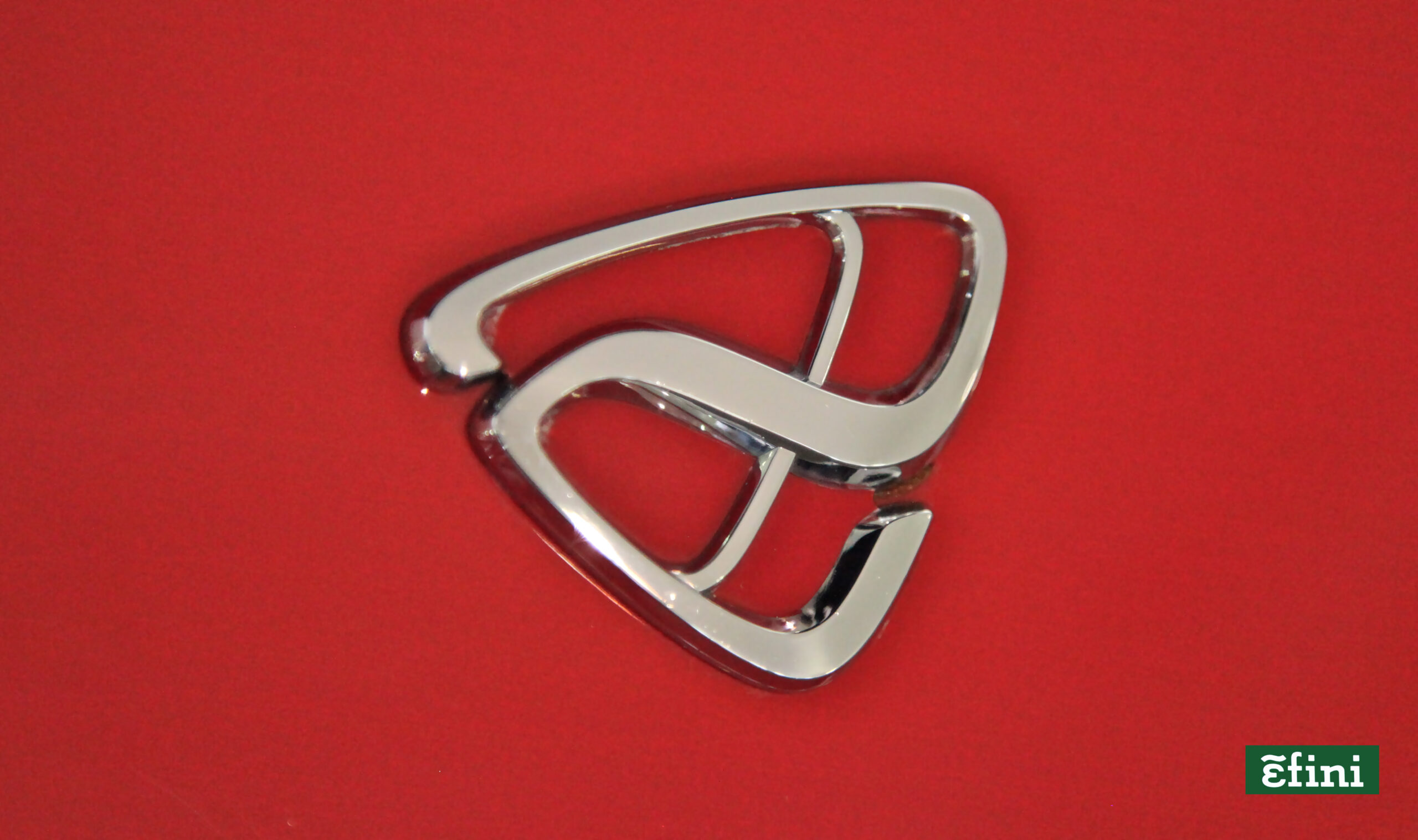
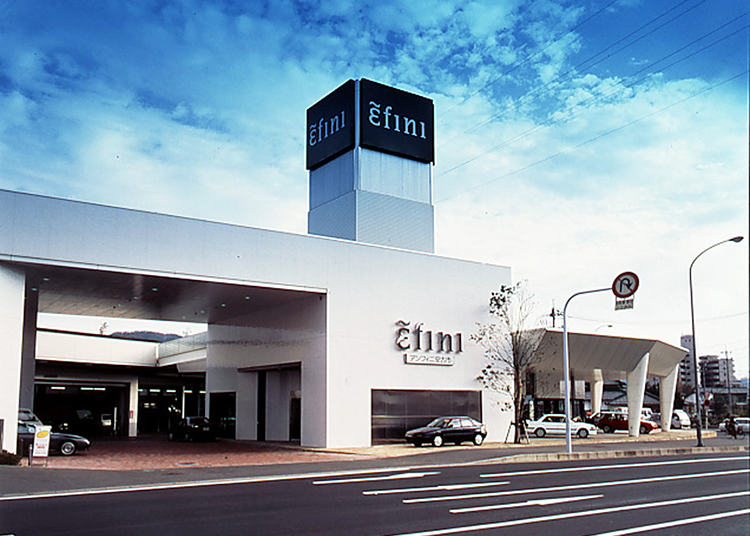
In November of 1991 they also introduced the Anfini MS-6 (known as Mazda 626). This sporty sedan realized high-quality cruising and was powered by a 2.0- or 1.8-liter V-6 DOHC engine (maximum output: 160ps or 140ps, respectively).
It was followed by the Anfini MS-9 (known as Mazda 929). It featured a chrome-plated grille with a black accent in the middle and was powered by either a 2.5- or 3.0-liter V-6 DOHC engine.
In December, they introduced the Anfini RX-7 (known as RX-7). The aim was to develop a world-class sports car and the development concept was “the best rotary engine pure sports car.” The 13B 2-rotor rotary engine (255ps) with sequential twin turbo charger was mounted in the traditional front mid-ship layout, achieving 50:50 weight distribution. Superb dynamic performance was achieved with thorough weight-saving measures as well as double wishbone suspension for all four wheels entirely made of aluminum. The weight-to-power ratio was 4.9kg per PS (metric horsepower). The model was popularly known as “FD”. The third-generation Mazda RX-7 won the inaugural Japan New Car of the Year award from the Automotive Researchers’ and Journalists’ Conference of Japan (RJC) for its great styling and outstanding handling performance.
They also started exporting to Brazil, and Norimasa Furuta and Yoshihiro Wada named vice chairman and president respectively.
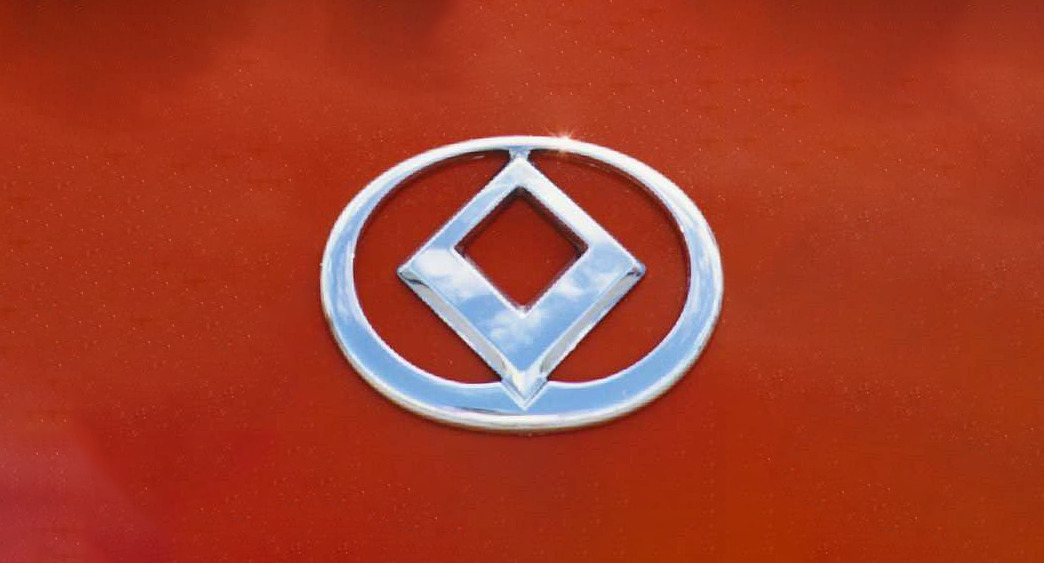
In January of 1992, Mazda added GT-R and GT-Ae model grades to Familia Astina (Mazda 323F) full-time 4WD three-door hatchback. These models featured a front bumper with large diameter fog lamps, a three-bulge hood and an exclusive front grille.
A 1800 DOHC turbo engine with intercooler provided max power of 210ps/6,000rpm (net) and max torque of 25.5kg-m/4,500 rpm. Molten forged pistons with cooling channels and kelmet connecting-rod metal were adopted. Large-diameter disc brakes were also equipped.
For GT-Ae, the weight was reduced by 20kg with simplified specifications and the second, third and fourth gear ratios were made closer.
It also introduced the MX-6, a two-door specialty vehicle, the MX-6 featured a 2.5-liter (200ps) and a 2.0-liter (160ps) V6 DOHC engine made entirely of aluminum. It adopted a four-stage variable resonance induction system and all model grades featured electronic speed-sensitive four-wheel steering.
In February, Mazda establishes a body manufacturing company called Hainan Mazda Motor & Stamping Co., Ltd. in Hainan·Full-scale together with Itochu Corporation, and production starts in Hofu No.2 Plant.
They also introduces the Eunos 500 (Xedos 6) in Japan. Revolving around a theme called “Lasting Value”, the model was developed pursuing “refinement” and “high quality”. With its low and wide proportion, the car featured a 2.0-liter and 1.8-liter V6DOHC engine. Highly functional hi-reflex coating was adopted.
March brings the introduction of the Anfini MS-8, a 4-door pillared hardtop model that pursued driving pleasure. The model adopted projector headlights, a 2.5-liter and a 2.2-liter V6 DOHC engine with a four-stage variable resonance induction system. High-grade models featured electronic speed-sensitive four-wheel steering. An electronically-controlled 4-speed automatic transmission was adopted across all model grades. The AT shift lever was installed on the instrument panel. A “new mode” seat, which combined the driver seat and console, was featured. A super glass sunroof, twice the size of a conventional sunroofs, was prepared as an option.
It also adds a model with 2000 P.W.S. diesel engine to Cronos (626) lineup.
RX-7 wins the overall championship in the 92 James Hardie 12-Hour Production Race held in Bathurst, Australia in April and the ‘Mazda Global Environmental Charter’ is adopted.
In May, they introduced the Autozam Clef. It was the first Autozam sports saloon whose number plate started from 3. The model featured a 2.5-liter and a 2.0-liter V6 DOHC engine as well as a 2.0-liter in-line 4-cylinder DOHC engine (for 4WD). A wrap-around design from the instrument panel to the door panels was adopted. A full-auto air conditioner with electric louver was equipped as a standard feature.
Additionally, Mazda added a 2.5-liter V6 DOHC engine to the Cronos (626) lineup, it featured max power of 200ps/6,500rpm (net) and max torque of 22.8kg-m/5,500rpm. Models with the engine adopted front dampers with built-in rebound springs and a rear spoiler as standard.
It also starts selling the Citroen ZX at Eunos dealerships in Japan, which featured a 1.6-liter in-line 4-cylinder OHC injection (single point) and a 1.9-liter in-line 4-cylinder OHC injection (multi-point) engine.
In June, MMUC becomes AutoAlliance International, Inc., (AAI) an equal partnership between Mazda and Ford, Mazda develops decomposition liquefaction catalyst technology and adds 2.0i.e. (4AT) and 2.0 turbo model grades to the Lancia Dedra lineup.
In October, Mazda introduces the AZ-1. A two-seater micro-mini coupe with gull-wing doors, the AZ-1 featured the first outer panel made entirely of plastic. A 660cc in-line 3-cylinder DOHC engine with intercooler turbo was installed in mid-ship layout. Max power was 64ps/6,500rpm (net) and max torque was 8.7kg-m/4,000rpm. A front-to-rear weight distribution of 44:56 was achieved with two occupants. The model was designed to be low-weight and low center of gravity (400mm with two occupants). It featured a quick and direct steering feel.
In November, Mazda holds a ceremony to mark completion of Engineering Building No. 3, develops a passenger car with a natural gas engine and finished the year by naming Norimasa Furuta as chariman.
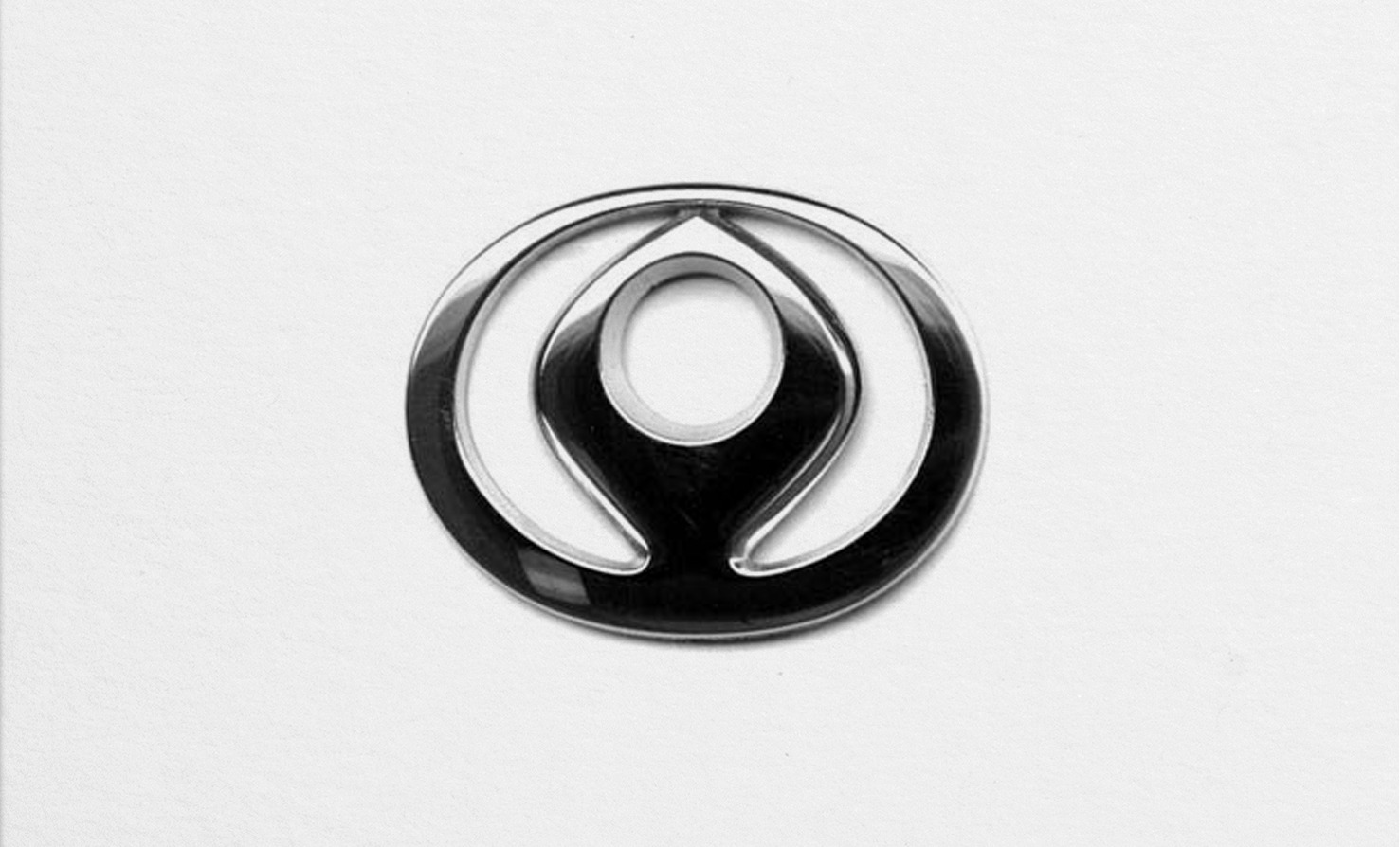
Mazda begins 1993 by developing electric-powered vehicles based on the Mazda MX-5, and in March formulates an “Environment-Related Activity Promotion Plan (Mazda Environmental Voluntary Plan)”.
That April, it develops the world’s first Miller cycle engine for cars.
RX-7 wins the overall championship in the James Hardie 12-Hour Production Race held in Bathurst, Australia for second year running. RX-7s driven by Mazda Australia Team scooped both first and second places. Alan Jones and Garry Walden, driving car No. 7, finished first and Charlie O’Brien and Gregg Hansford, driving car No. 1, came in second.
In May, Mazda successfully develops a new three-way catalyst for lean burn engines.
In September, they introduce the Lantis (323F). The model came in two body types: a 4-door hard top sedan and a 4-door hardtop coupe. Customers could choose between a 2.0-liter V6 DOHC engine (maximum output: 170ps) and a 1.8-liter in-line 4-cylinder DOHC engine. The model met safety regulations before they came into effect in April 1994. Furthermore, safety performance was improved to meet in-house crash standards raised in anticipation of stricter standards taking effect in the U.S. at the time.
In October, Mazda exhibits a hydrogen rotary engine vehicle called HRX-2 at the Tokyo Motor Show. That month, it also starts selling Citroen Xantia. The model featured a 2.0-liter in-line 4-cylinder OHC engine and hydropneumatic suspension or advanced hydractive suspensionⅡ. And, introduces Eunos 800 (Xedos9).
A 2.5-liter V6 engine model went on sale in October. The world’s first Miller cycle engine model was introduced in November.
The Miller cycle model adopted a 2254cc, V6 DOHC engine and a Lysholm compressor for high intake pressure. It generated a maximum output of 220ps/5,500 rpm (net) and maximum torque of 30.0kg-m/3,500 rpm while also offering good fuel economy.
Four-wheel multi-link suspension and a yaw rate-sensing four-wheel steering system were adopted. An elegant body form with excellent aerodynamic performance was pursued. The hood was made of aluminum. Mica was used for all the body colors and a highly functional hi-reflex coating was adopted.
Within the same month, Mazda and Nissan Motor Corporation enter into an OEM supply agreement for mutual supply of commercial vehicles.
Driving a Mazda 323 GT-R, Alessandro Fassina of Rally Team Italia won the series championship in Group N of the World Rally Championship in November.
Mazda and Ford enter into a long-term strategic relationship to enhance competitive strength in December of 1993.
Mazda starts 1994 by developing a compressed-natural-gas-powered truck. The model is modified to use natural gas as a fuel from a 4-liter diesel engine model. With five gas cylinders, the driving range expands to more than 650km (at 60km/h).
It also introduces the M2 1028 (MX-5) February, followed by the 6-seater Bongo EV in March which is equipped with a lead battery, the model’s standard charging time is eight hours. The maximum speed is 120km/h, and the driving range is 170km (at 40km/h of constant velocity drive).
That April, the Enfini RX-7 wins the 1994 James Hardie 12 Hour Production Race for three consecutive years. The number 7 of BP Mazda Motorsport team (drivers; Gregg Hansford, Neil Crompton, Allan Grice) wins the race.
In May, The Mazda Museum opens within the headquarters’ premises.
In June, Mazda introduces the 8th generation Familia (323/323F/323 Protege/Protege (US)). The model is developed under the product concept of the best compact. Two body types are available; a sporty hatchback, Famila Neo, and Familia sedan. The engine lineup includes the efficient Inline, 4-cylinder 1.5-liter DOHC engine (Z5-DE type), a sporty high-rotation inline, 4-cylinder 1.5-liter DOHC (B5-ZE type), and a 1.8-liter DOHC (BP-ZE type). (For some model grades, a 1.3-liter engine is available.)
Then in August, it introduces the 6th generation Capella.
This is developed in line with a concept of “comfort made for the Japanese market.” It boasts roomy cabin and luggage space in a vehicle which is categorized in a smaller sized compact vehicle.
There are two engines available for the model: One is a 2.0-liter inline 4 cylinder DOHC engine(net output 125ps/5500rpm and max. torque 17.6kg-m/4500rpm), and the other is a 1.8-liter inline 4-cylinder DOHC engine (max. output of 115 ps/5500rpm, and max. torque of 16.0kg-m/4500 rpm). Both FWD and full-time AWD are available.
September saw a model with a new lean-burn engine called Z-Lean is added to the lineup of Familia sedan. It reaches the fuel economy of 20.0km/L ( 5-speed manual transmission) and 15.6 km/L (4-speed automatic transmission) with the 10-15 test cycle mode. A three-way catalyst for a lean burn engine is installed.
The maximum output for the 1.5-L Inline 4-cylinder DOHC Z-Lean engine is 94 ps/5,500rpm boasting 13.5 kg-m of maximum torque.
It also introduces the AZ-Wagon [Suzuki OEM] and the Familia Van/Wagon [Nissan OEM].
It then introduces the Capella Wagon in October. The Capella Cargo (known as 626 Station Wagon overseas) introduced in 1988 is renamed and introduced as a station-wagon exclusive model.A grille guard and large fog lamps are available for some model grades, and the engine lineup includes a 1.8-liter DOHC engine and a 2.0-liter diesel engine with a pressure wave supercharger.
It also adds a model equipped with a 1.7-L diesel intercooled engine with a turbo charger to the Famillia sedan model grade lineup.
An air scoop is added to the bonnet for the intercooler, and the model boasts net maximum output of 88ps/4500 rpm and maximum torque of 17.0kg-m/2,500rpm.
A model with full-time AWD system is added to the Familia sedan model grade lineup. A 1.6-L DOHC engine and a 1.7-L intercooled diesel engine with a turbo charger are available for the model.
The maximum output for the 1.6-L Inline 4-cylinder engine is 115 ps/6,000rpm boasting 14.5 kg-m/3500rpm of maximum torque.
With a new larger front bumper, the overall length of the vehicle is extended by 70mm, and for the overall height, it is 2-mm taler than the previous model.
Mazda ends 1994 by establishing the Mazda Training Center in Bejing, China, for training for aftersales services and also acquires the ISO 9002 certificate, first among Japanese auto makers.
1995 began with the introduction of the Proceed Levante in February.
A 2.0-liter V6DOHC gasoline engine and a 2.0-liter diesel turbo engine were available. The model came in two body types: short (overall length: 3,715mm) and long (4,095mm). All model grades featured part-time 4-wheel-drive.
It was followed by the Titan Motorhome camper van introduced in March, and in June, Mazda announces a major update for Titan.
Driving performance was enhanced with three new high-powered engines: a 3.0-liter diesel, a 4.3-liter and a 4.6-liter direct-injection diesel engines. The 4.6-liter model featured a 6-speed manual transmission, realizing low fuel consumption and quietness at high speed driving. An LPG engine was added to lineup.
It also introduced the Bongo Friendee in Japan that June. The 4th-generation Bongo adopted a 1.3 box style and featured a spacious interior with multiple seating arrangements.
Auto Free Top models featured a raisable roof that created a loft large enough for two adults to sleep.
Seating capacity: 5, 6 (Camper), 7 or 8 people. Engines: a newly-developed 2.5-liter diesel turbo engine with intercooler, a 2.5-liter V6 gasoline engine, a 2.0-liter in-line 4-cylinder gasoline engine. Drive system: FF or full-time 4WD.
In November, Mazda introduces the 3rd-generation Carol. A driver-side SRS airbag was equipped as standard on all model grades, a first among micro-minis. The model adopted a bumper made of colored material for enhanced recyclability.
It also introduces the 2nd-generation Sentia. The model featured a regal exterior design, roomier rear seats that allowed easier ingress and egress, and a high-capacity trunk room.
A 3.0-liter V6 DOHC engine (max net output: 205ps/6,000rpm; max torque: 27.7kg-m/3,500rpm) and a 3.0-liter V6 SOHC engine (max net output: 160ps/5,500rpm; max torque: 25.0kg-m/2,500rpm) were available.
Four-wheel multi-link suspension was standard on all model grades. An electric four-wheel steering system was adopted for some model grades.
That November, Mazda and Ford jointly establish AutoAlliance (Thailand) Company Limited (AAT).
In March of 1996, Mazda introduces the Ford-produced Mazda 121 into major European markets and launches the official Mazda website.
In April, Anfini dealerships are renamed Mazda Anfini and the Eunos dealerships are integrated into Mazda Anfini or Mazda dealerships. In May, the share holding ratio of Ford increased from 25% to 33.4%.
In June of 1996, Henry D.G. Wallace becomes president.
In August, Mazda introduces the first-generation Demio (121) in Japan, and in November, wins the “Japan Car of the Year Special Award”.
In February of 1997, Mazda embarks on enhancement of North American operations. That April, Mazda receives an award from the head of Japan’s patent office for disclosing patents and technology.In June, Mazda inaugurates its new brand symbol, the Mazda M.
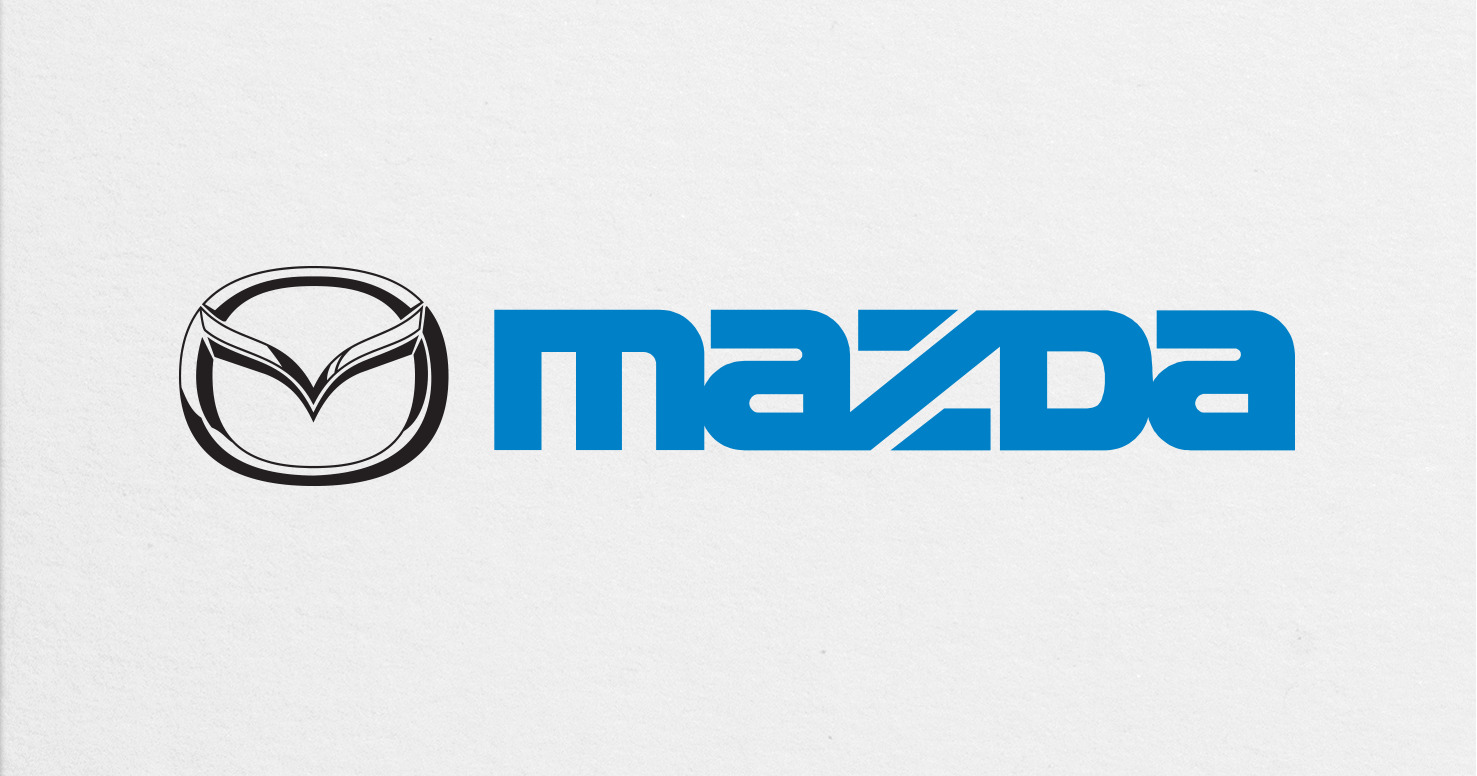
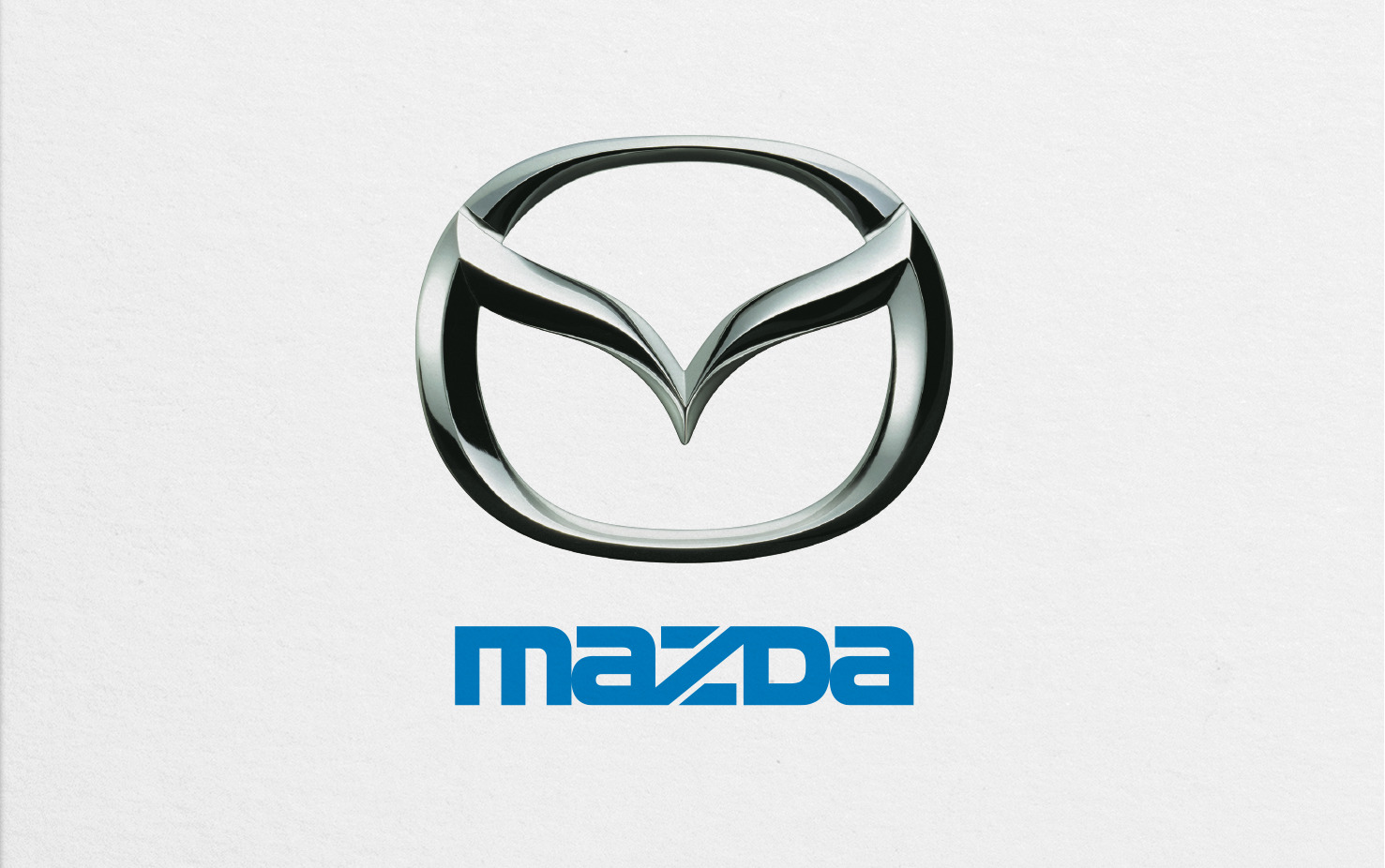
In July of 1997, The Eunos 800 is renamed Millenia, and introduces the 7th generation Capella (626) sedan.
It adopted a compact body and fit into the category of models whose number plate starts from 5. All models featured an in-line 4-cylinder DOHC diluted burn engine. By improving the charging efficiency and combustion, FS-ZE type 2.0-liter DOHC engine (premium gasoline) provided max output of 170ps/6,800rpm (net) and max torque of 18.4kg・m/5,000rpm (net.) A 2.0-liter and a 1.8-liter DOHC engines that use regular gasoline were also available.
The model offered a variety of seat arrangements as well as a comfortable riding environment that reduced fatigue. The model adopted a new body (MAGMA) that was highly rigid and offered good safety protection as well as the world’s first SRS side airbag system with head protection. All FF models adopted traction control system as standard.
In October, Mazda starts selling the RX-7 Type RS-R, the 30th anniversary limited edition to commemorate the birth of rotary engine the Mazda Anfini RX-7 is renamed Mazda RX-7.
In November, the all-new Mazda Capella Wagon (626 Wagon / 626 Station-Wagon) is introduced, as well as the 2nd generation Proceed Revante. James E. Miller is appointed president.
In December of 1997, Mazda develops the Demio FCEV, fuel-cell electric vehicle. Its fuel cell system comprised a fuel cell stack, a metal hydride hydrogen storage tank and an air compressor. It featured an ultra-capacitor and a drive motor.
In January of 1998, a new corporate symbol is released.
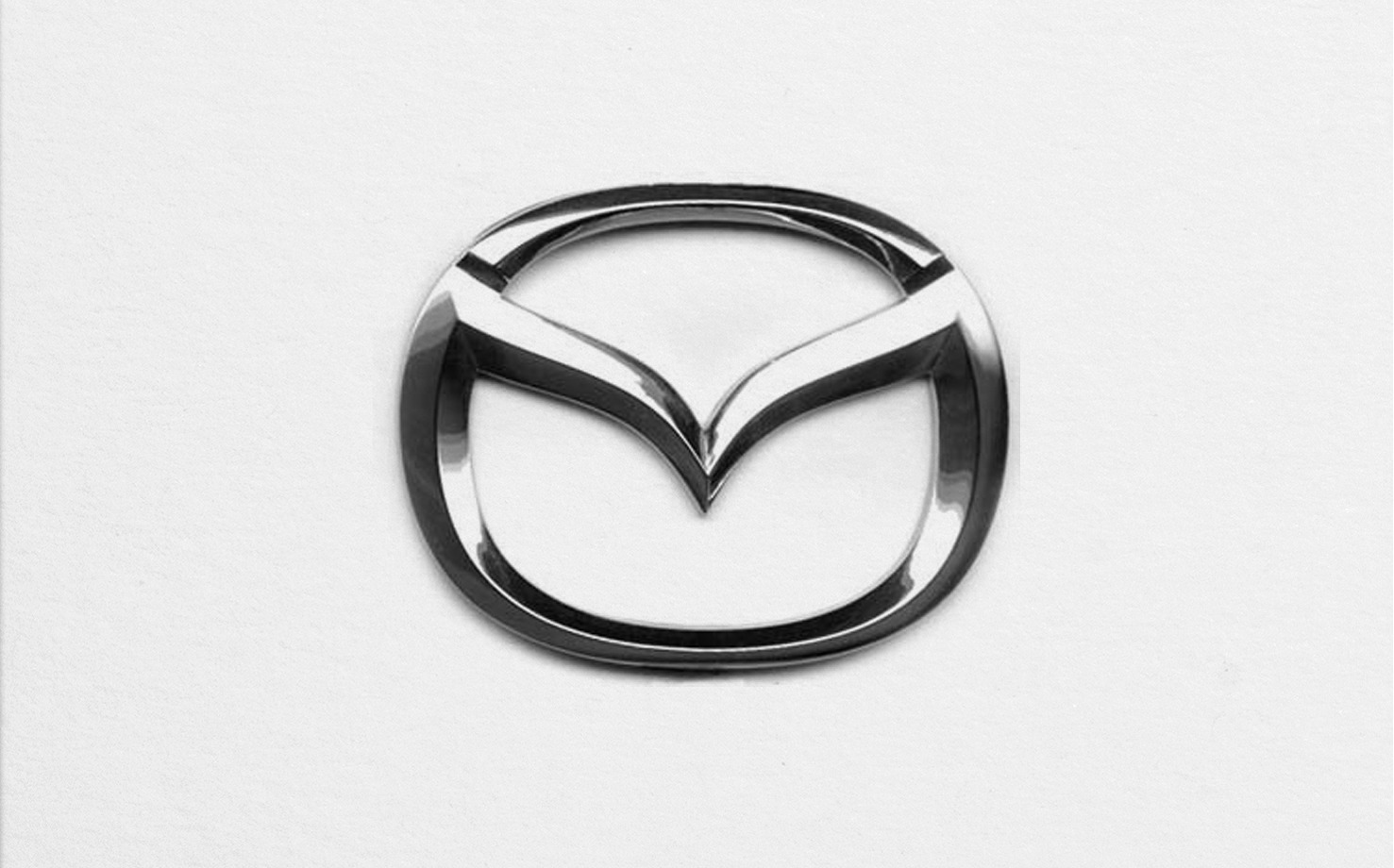
January of 1998 also saw the introduction of the 2nd generations Mazda Roadster (MX-5).
Fixed headlamps were adopted. Came with a 1.8-liter I4 DOHC engine (with max. power (net) of 145ps/6500rpm) or a 1.6-liter I4 DOHC engine (with max power (net) of 125 ps at 6500 rpm). A 6-speed manual transmission model was available with the 1.8-liter engine.
Glass rear window with defroster was available for the soft top model. (Excluding the standard model grade). Luggage space was increased to 144 liter (VDA standard). A wind deflector was adopted to reduce buffeting in the cabin.
The rigid and safe MAGMA body was adopted. Two impact bars were installed in the doors. SRS airbags were standard equipment for both driver and passenger seats.
In March of 1999, Mazda introduces the first generation Premacy, and introduces the Laputa (micro-mini vehicle).
In April, Mazda’s new brand message “Get it and be moved.” is launched. In August, the New MPV and the the fourth-generation new Bongo van/truck are introduced. In November, Mazda announces a major update for the Capella (626) wagon and sedan. In December, it adds a first passenger wagon to Scrum series. It featured a SOHC turbo engine with max output of 64ps. 4WD models adopted a full-time 4WD system. Mark Fields is appointed president.
Mazda began 2020 with the releases of the all-new “Tribute” at LA Auto Show. In March, it adopts uniforms made of fabric recycled from plastic bottles and in April, participates in the joint project of the test run of fuel cell vehicles.
In June, it introduces the new Titan in Japan as well as a Compressed Natural Gas-Fueled Version of the Demio. In September, it introduces the MDI Ⅲ, and in October, a brand new Titan Dash. In November, it introduces a brand new Tribute.
Jointly developed with Ford, the Tribute was the first light sports utility vehicle (SUV) to be powered by a three-liter V6 engine. Thanks to a spacious cabin, outstanding styling and excellent performance both on- and off-road, the Tribute quickly outshone SUVs from other manufacturers.
In February of 2002, Mazda introduces the ‘build-to-order’ system for Roadster and Familia S-Wagon. The Web Tune Factory is an online built-to-order service for Mazda’s customers in Japan. The website enables customers to select their desired specifications and place an order via the Internet. The first two models available through the Web Tune Factory were the Roadster (MX-5) and Familia S-Wagon (Protegé5/Astina NU).
That month, Mazda develops a new fuel cell electric vehicle, the Premacy FC-EV and does test runs on public roads in Japan. It also holds a roadshow in Frankfurt (MRE), and reveals the ‘MX Sport Tourer’ at the Geneva Motor Show.
In January f 2002, Mazda Showcases the “Mazda6” Sedan at North American International Auto Show, and in February, introduces the Mazda Spiano. In March, the Mazda MX Sport Runabout Small Car Concept Unveiled at the Geneva Show and
a final Limited Edition of Mazda RX-7 ‘Spirit R’ is unleashed.
In April of 2002, it introduces the new ‘Zoom-Zoom’ brand message in order to promote the Mazda brand worldwide. Simple and with catchy onomatopoeia, it transcends language barriers and clearly communicates the emotion of motion first experienced as a child.
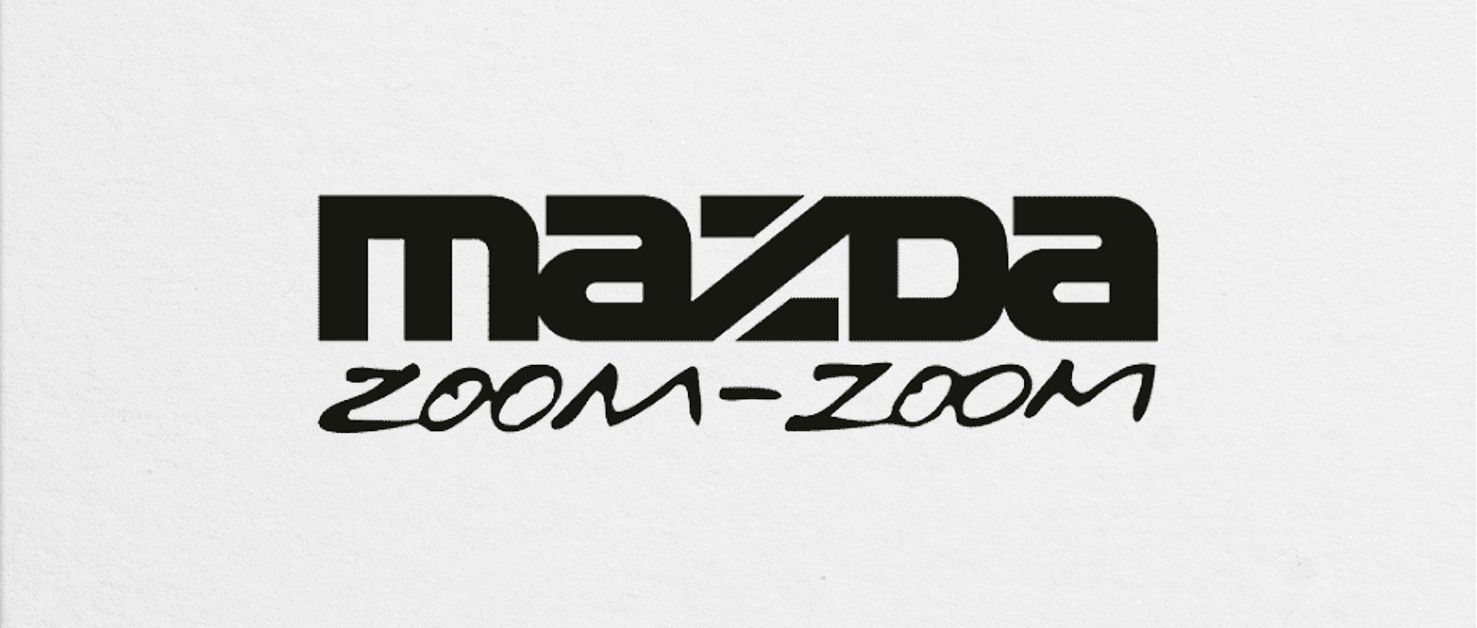
In June of 2002, Mr. Fields steps down as the president. Lewis Booth confirmed Mazda President.
The fully redesigned Mazda Demio (Mazda2) was developed and released in August to be a class above other compact cars. In Japan, it was offered in three individual trim levels: Cozy, SPORT and Casual in order to match different customer lifestyles. All three versions offered a high-quality cabin space and driving pleasure. The Mazda MPV Special Edition ‘Sports F’ also developed.
In September, the new Mazda6 Sports Sedan is launched at AAI and Mazda reveals the ‘Mazad2’, the first model produced and engineered in Europe at the Paris Auto Show.
2003 began with production of Renesis rotary engine in January, and Mazda showcases ‘Mazda Washu’ at North American International Auto Show. In February, they start production of Mazda RX-8. That March, the ‘MX Sportif’ design concept debuts at the Geneva International Motor Show.
In April, Mazda releases the all-new Mazda RX-8, a four-door, four-seat sports car powered by Mazda’s revolutionary Renesis rotary engine. Thanks to the engineering innovation behind Renesis, Mazda was able to furnish the RX-8 with sports car styling and driving performance, and comfortably accommodate four adults. In June of 2003, the Renesis rotary engine wins the International Engine of the Year.
In August of 2003, Hisakazu Imaki appointed President and CEO.
The Mazda Kusabi’ design concept debuts at Frankfurt Auto Show in September, and in October, it unveils the Mazda Ibuki concept and Hydrogen Rotary Engine at Tokyo Motor Show. That same month, it introduces all-new Axela.
The first three new-generation products, the Atenza (Mazda6), Demio (Mazda2) and RX-8 had been successfully imbued with Mazda’s Zoom-Zoom DNA. Mazda then set about integrating the virtues of these models into the fourth product, the Mazda Axela (Mazda3). To ensure the new model would be globally competitive, Mazda focused on driving performance, design, quality, packaging and safety. In particular, Mazda aimed to set a new standard for driving performance that would provide peace of mind at the same time as sporty driving. Bold and unique styling, as well as superior quality were also targeted by the development team to further enhance the overall ownership experience.
They end the year with the RX-8 wining the 2004 “RJC Car of The Year” and the Renesis is named RJC Technology of The Year in November, then in December, the Mazda6 is named 2004 Car of The Year in China.
The awards continue in 2004 when the RX-8 wins Wheels Car of the Year in Australia in January. Mazda also exhibits the ‘Mazda MX-Micro Sport’ at the North American International Auto Show. Then in February, the Mazda3 wins the Canadian Car of The Year for 2004. In March, Mazda’s Renesis wins category 2.5-3.0 liter of International Engine of The Year for second year running.
In August, Mazda unveils the all-new space wagon Mazda5 at 2004 Paris Motor Show and in October, the all-new Premacy is exhibited at the Tokyo Motor Show.
In February of 2005, Mazda opened its newly-renovated Museum which underwent a comprehensive refurbishment during it’s 85th anniversary year.
That month, they also introduced all new Mazda5 packed with innovative ideas. The Mazda Premacy (Mazda5) was the first minivan to join Mazda’s lineup of next-generation products that were introduced from 2002. It evolved Mazda’s Zoom-Zoom brand promise and featured an innovative packaging concept called “6+one” (six full-time seats plus one foldout seat). The Premacy provided an open cabin space in which all occupants could enjoy a comfortable ride and communicate easily.
They finished up in February with the all-new Mazda MX-5, unleashed in Geneva.
In June of 2005, Mazda develops the world’s first steel-to-aluminum friction spot welding technology.
In August Mazda launches new generation MX-5. The third-generation Roadster (MX-5) carried over the Jinba Ittai (meaning “rider and horse as one”) development concept from the original model. Mazda’s latest lightweight open-top sports car offered improved performance thanks to a newly developed lightweight and compact 2.0-liter MZR engine, comprehensive weight reduction, optimal weight distribution, and the latest environmental and safety features. In November, the MX-5 wins 2005-2006 Japan Car of the Year.
In March of 2006, Mazda begins commercial leasing of world’s first rotary hydrogen vehicle (RX-8 Hydrogen RE). It also had the global reveal of the BT-50 at the Bangkok International Motor Show.
April of 2006 had many key moments, such as
·Introduces “Family of Experts” human resources system.
·Establishes a national sales company in Russia.
·Mazda Autozam sales channel in Japan cumulative sales reach one million units.
·Delivers two rotary hydrogen vehicles to Hiroshima city and prefecture government authorities.
·Debuts all-new crossover SUV, CX-9, at New York International Motor Show.
·Mazda5 wins highest crash safety rating from EU and Japanese New Car Testing Agencies.
·Wins the Asahara Prize Technology Promotion Award and the Asahara Design Award.
In July of 2006, Mazda exhibits the new MX-5 with Power Retractable Hard Top at the British International Motor Show, and finishes off the year by launching the CX-7 in December.
Mazda began 2007 with the debut of the Ryuga design concept at 2007 North American International Auto Show. It also released the fully upgraded Titan and launched the fully redesigned Familia Van. Then in March, it showcased the all-new Mazda2 and Hakaze concept car at the Geneva International Motor Show.
That April, it won three best car awards at Thailand Car of the Year 2007 awards as well as the Asahara Prize Technology Promotion Award and the Asahara Design Award.
In September, it develops the world’s first biofabric made with 100% plant-derived fiber for vehicle interiors, and in October, develops the world-first catalyst material structure for autos using single nanotechnology.
The brand ends the year by debuting the Furai concept and new RX-8 at North American International Auto Show in December.
January 2008 saw the Mazda CX-9 Win the 2008 North American Truck of the Year Award, and the new Mazda2 Three-Door Hatchback revealed at the Geneva International Motor Show. Mazda also launched the fully redesigned Atenza.
More awards came in March with the all-new Mazda2 Winnng the 2008 World Car of the Year Award. It also showcased the all-new Mazda6 and Mazda Taiki Concepts at the Beijing Motor Show that month. In April, it revealed the all-new Mazda6 for the North American Market.
In July, the Kiyora concept too made its global debut at the Paris Motor Show. The world debut for all-new Mazda3 5-door Hatchback at the 2008 Bologna Motor Show in November, and in December, the all-new Mazda3 is announced and will be exhibited at the 2009 North American International Auto Show.
In February of 2009, the all-new Mazda3 i-stop and Mazda3 MPS Premiere at the 2009 Geneva Motor Show. In August, the MX-5 Superlight version’ show car premieres at the 2009 Frankfurt Motor Show.
January of 2010 saw the World premiere of the all-new Mazda5 at the 2010 Geneva Motor Show followed by the SKY Concept powertrains and premium sporty Mazda8 minivan exhibited at at Beijing International Automotive Exhibition in March. In July, the fully redesigned Mazda Premacy was revealed, a unique seven-seater popular for its stylish design and functionality.
Mazda’s new design theme, KODO-Soul of Motion was revealed along with a design concept car that embodies the KODO theme – Mazda Shinari in September, as well as the world premiere of the all-new Mazda BT-50 pickup truck.
In January of 2011, the Mazda MINAGI concept was shown at the Geneva Motor Show.August saw the world premiere of all-new crossover SUV, Mazda CX-5 at Frankfurt Motor Show.
In February of 2012, the Mazda CX-5 becomes the first model to offer the full range of SKYACTIV technologies gasoline and diesel engines, transmissions, body and chassis. The result is an unparalleled combination of exciting yet refined driving performance and outstanding fuel economy.
In June, Mazda launches all-new Flair wagon and upgraded Verisa in Japan. July saw the world premiere of the all-new Mazda6 at the Moscow Motor Show, and in September, the world premier of the all-new CX-9 at Australian International Motor Show followed by the all-new Flair and Flair Custom Style September launch in Japan.
In November, the Mazda CX-5 SKYACTIV-D 2.2 was named Car Technology of the Year award by Japan Automotive Hall of Fame. It also launched the all-new Carol Eco in Japan, as well as the 3rd generation Mazda6 (Atenza) equipped with i-ACTIVSENSE advanced safety technologies. Mazda’s next-generation SKYACTIV-D clean diesel engine receives the Technology Award from the Combustion Society of Japan in December.
In January of 2013, Mazda becomes world’s first automaker to adopt square steel pipe parts processed with 3 Dimensional Hot Bending and Quench technology. In March, the all-new Flair Wagon is launched in Japan and in June, the all-new Mazda3 (Axela) is revealed and the fully-redesigned Mazda Scrum is revealed in September followed by the Flair Wagon wheelchair-mover, and the all-new Axela (Mazda3) in Japan, both in November. It ends the year with new micro-mini Flair Crossover launch.
March of 2014 saw the World premiere of the Mazda HAZUMI concept at the Geneva Motor Show, foreshadowing Mazda’s next-generation compact car. In April, the 25th Anniversary Edition MX-5 is unveiled at New York Auto Show.
The 4th generation MX-5 (Roadster) was unveiled at simultaneous fan events in Japan, the U.S. and Spain in September. In October, the Mazda Demio (Mazda2) was named the 2014-2015 Japan Car of the Year Japan. It was the fifth Mazda to take the award. In December, it the Mazda LM55 Vision Gran Turismo virtual sports car is introduced.
